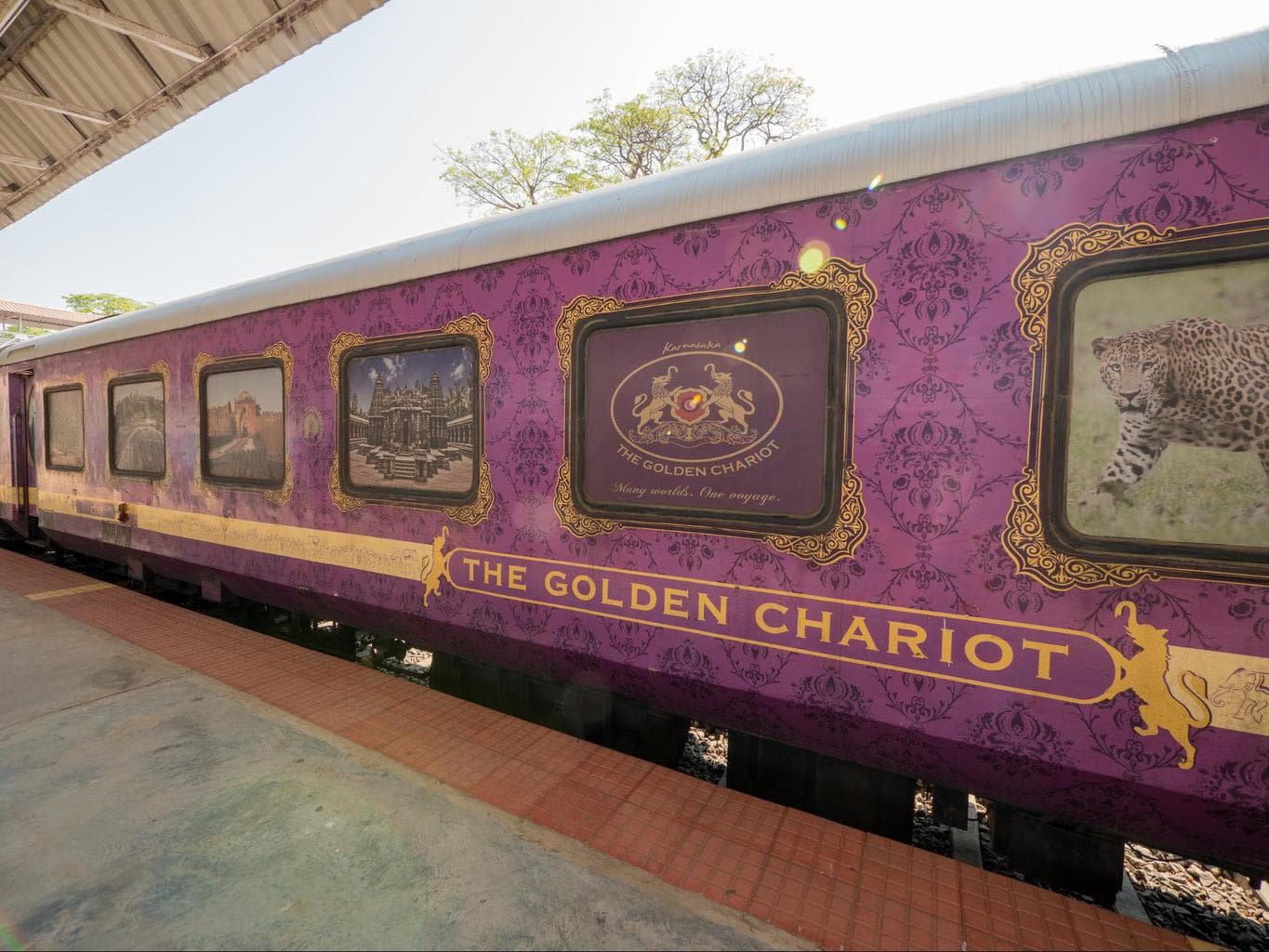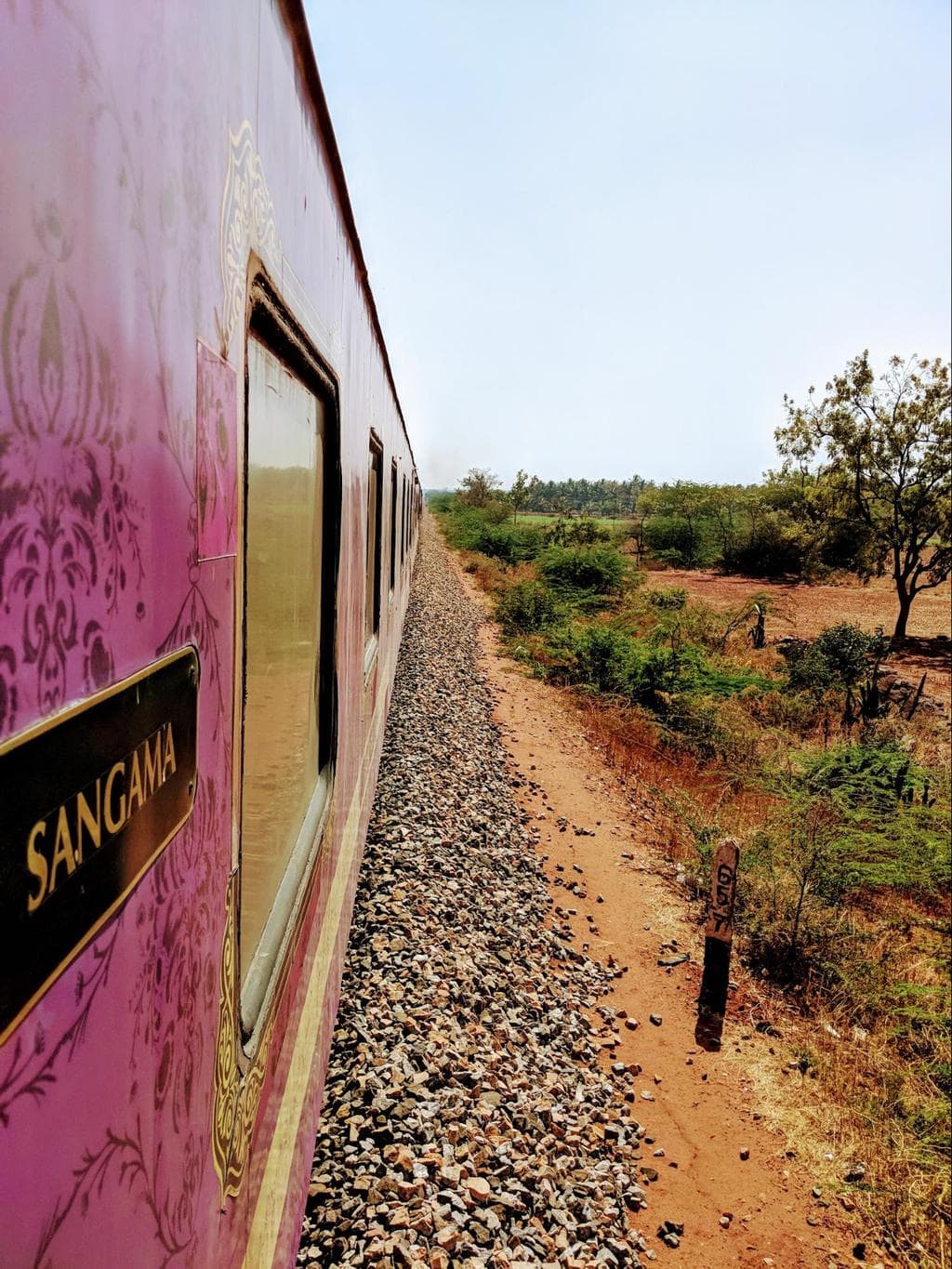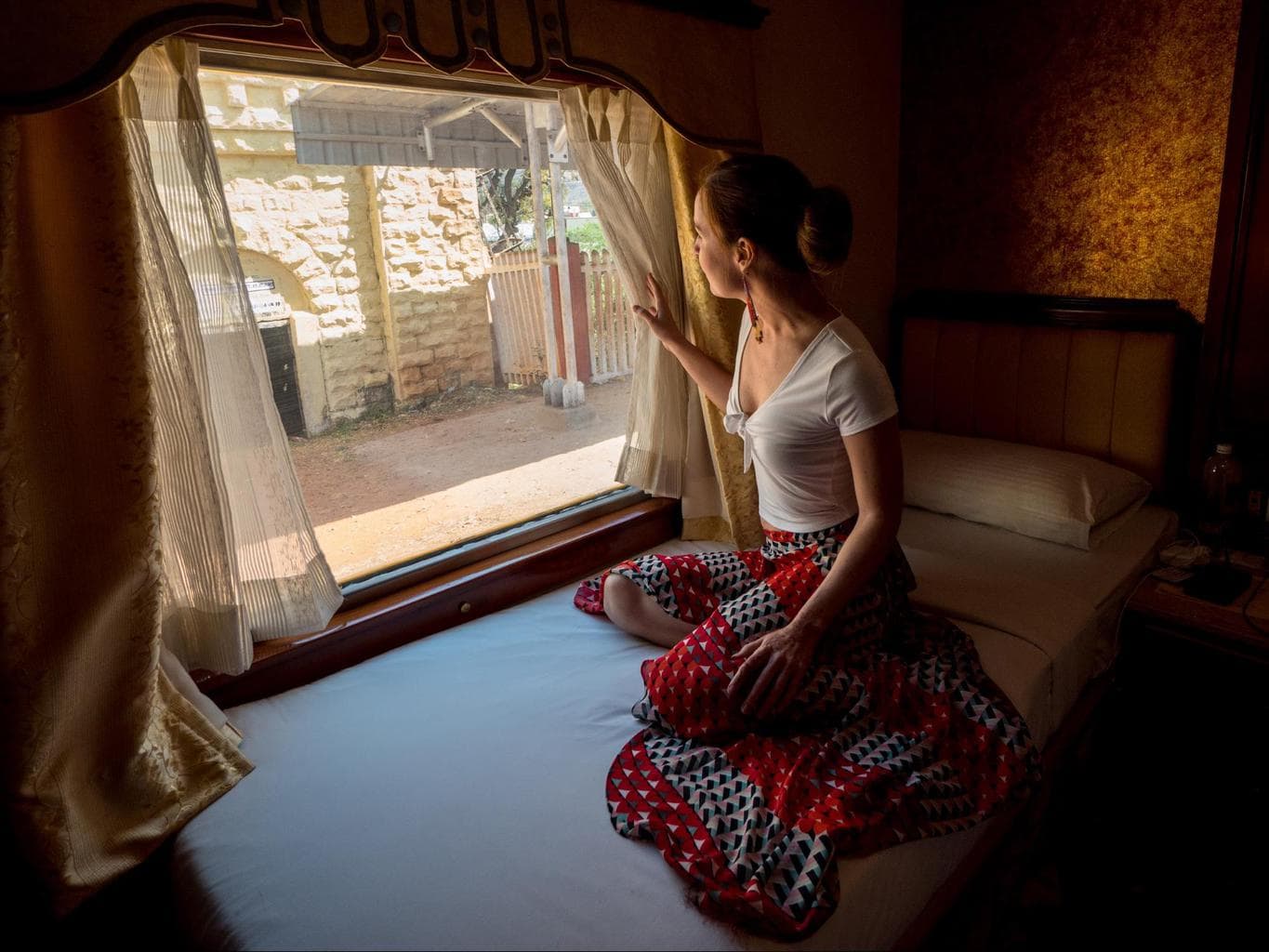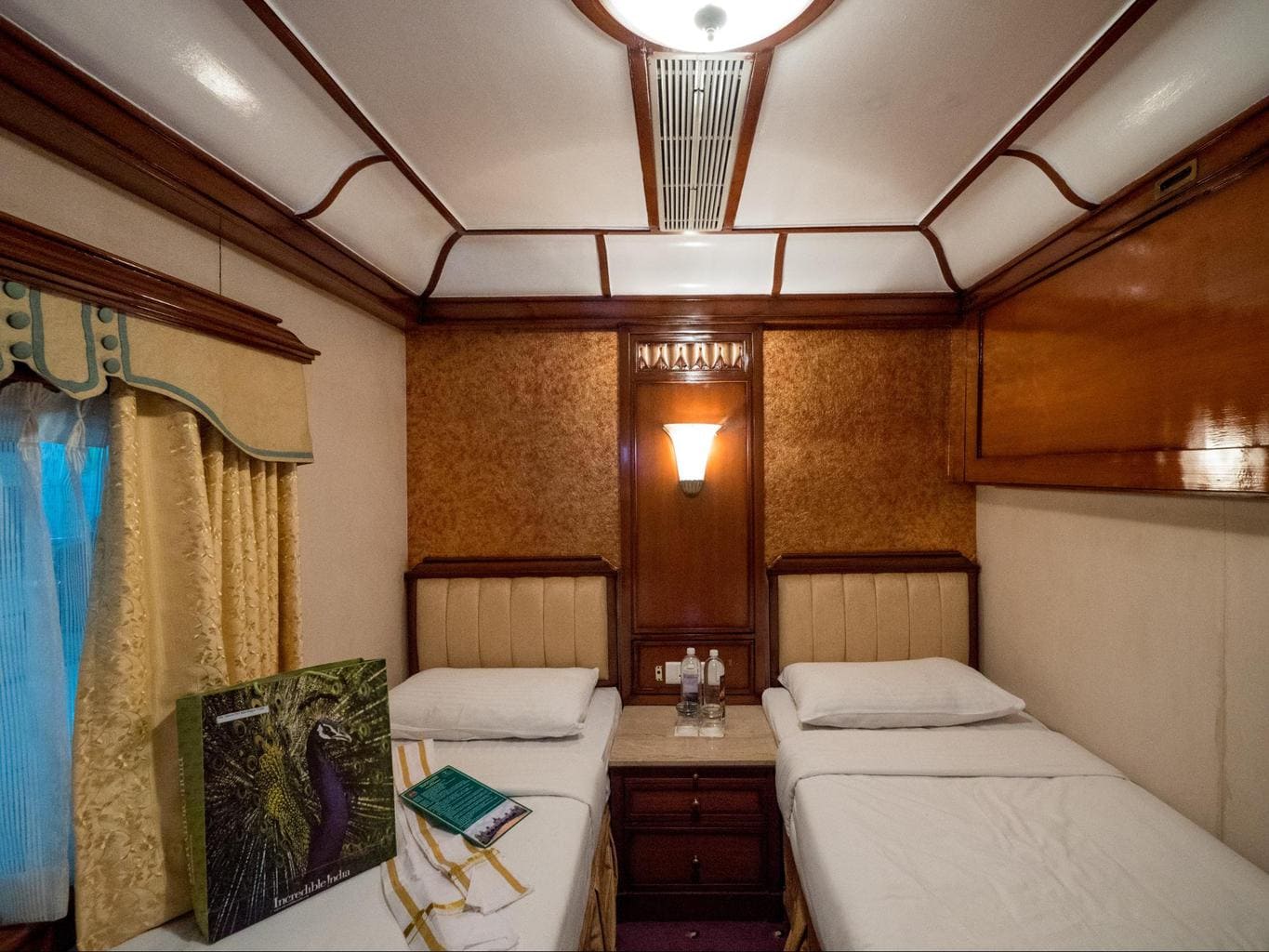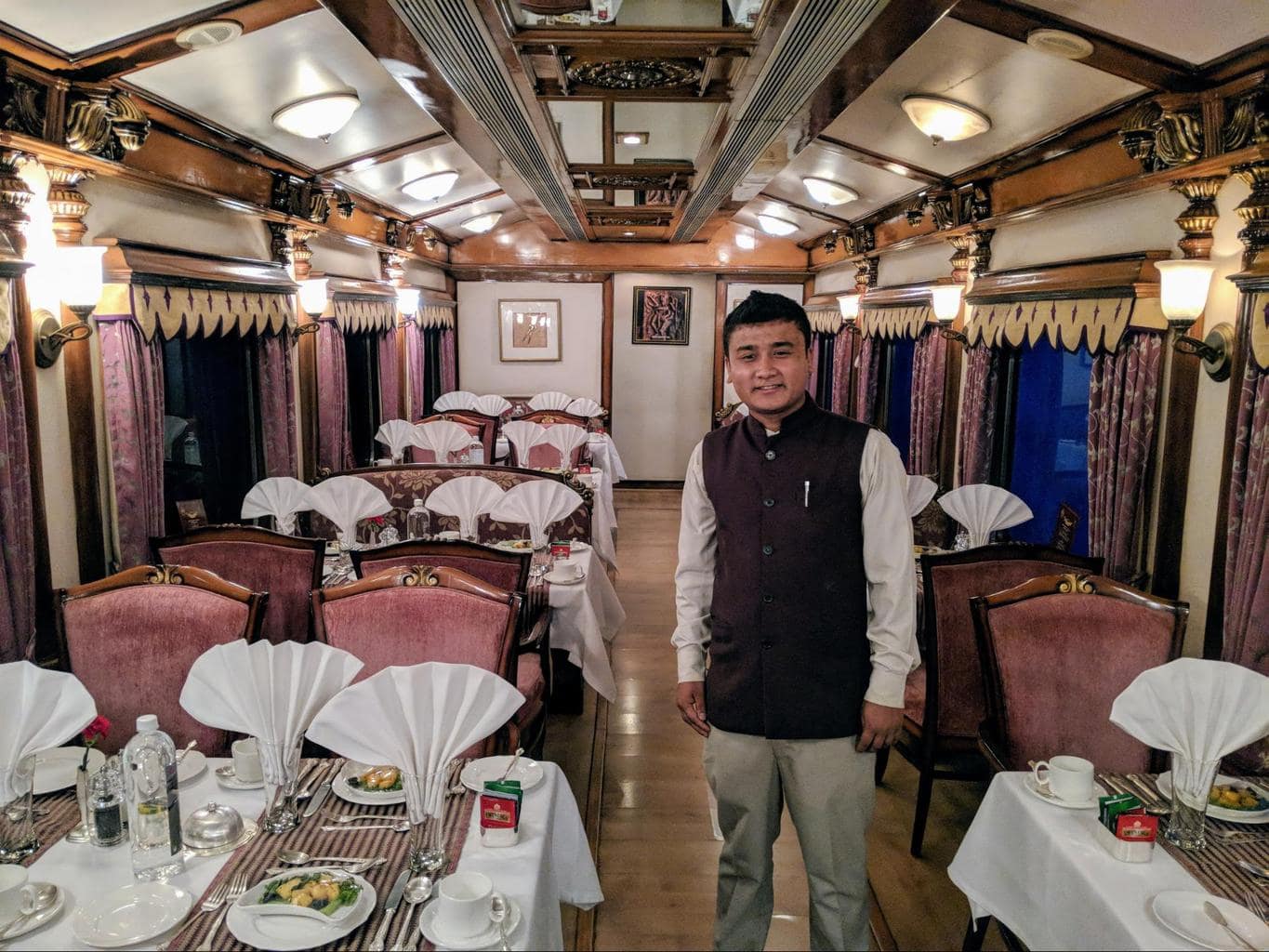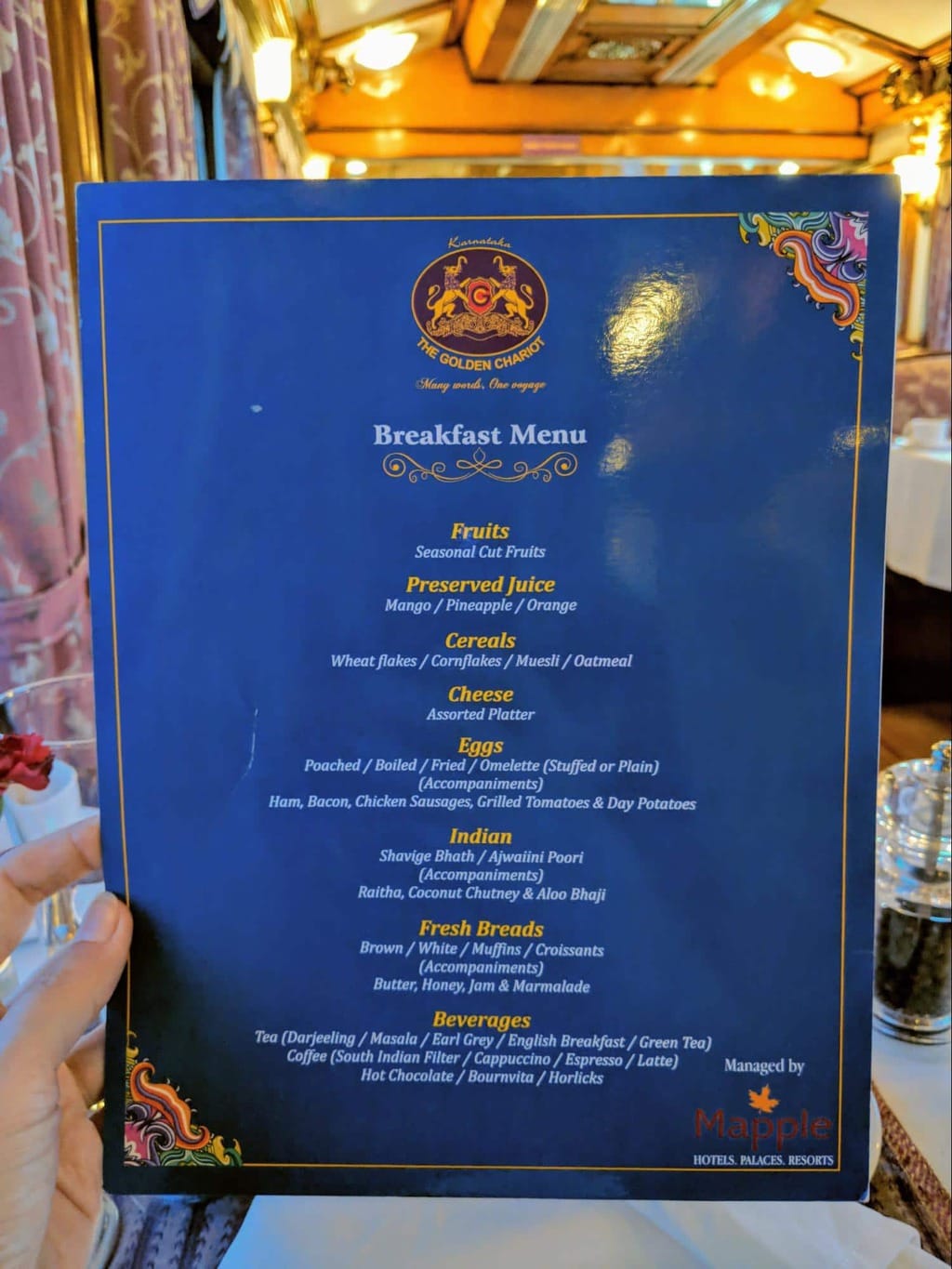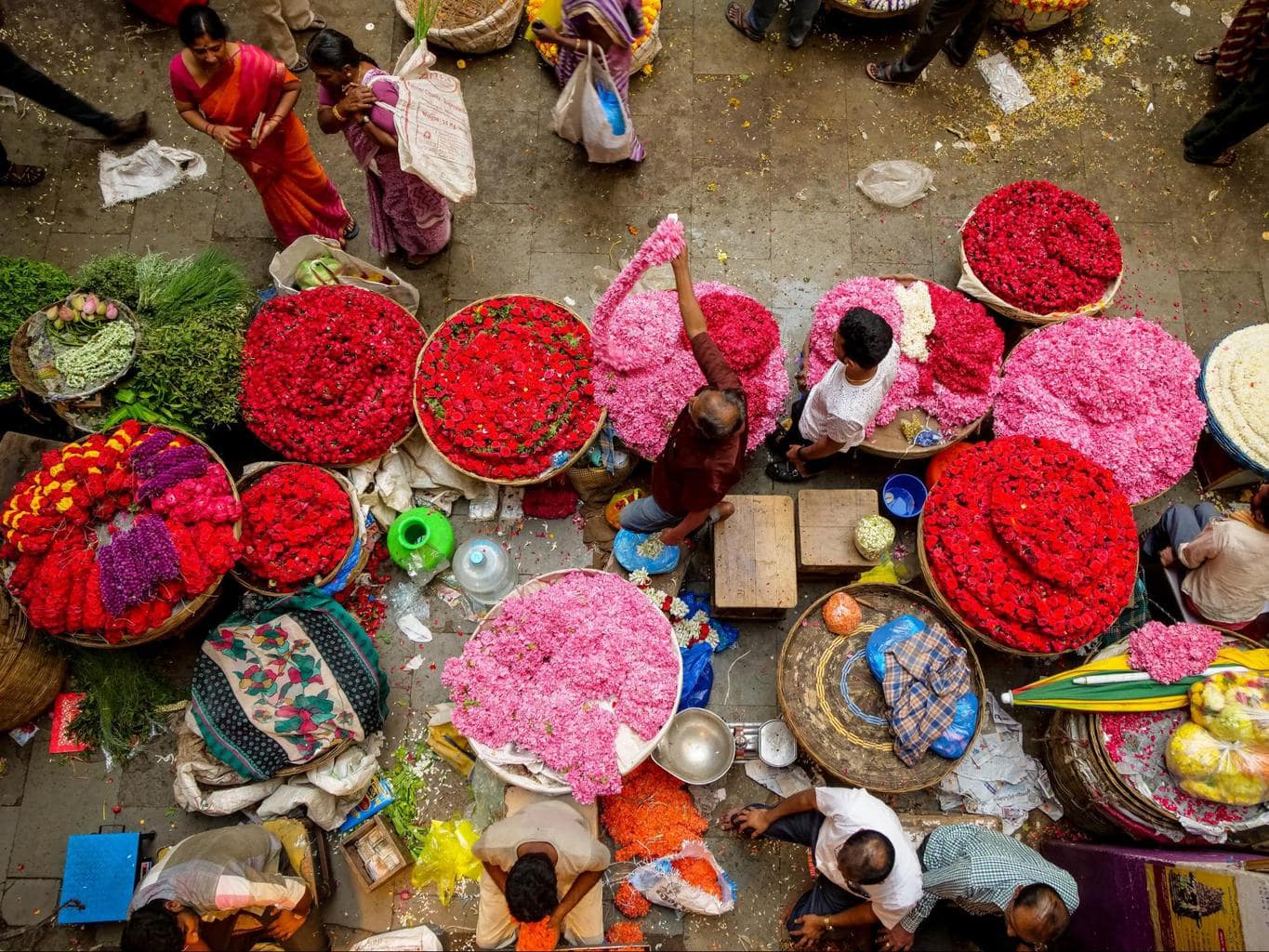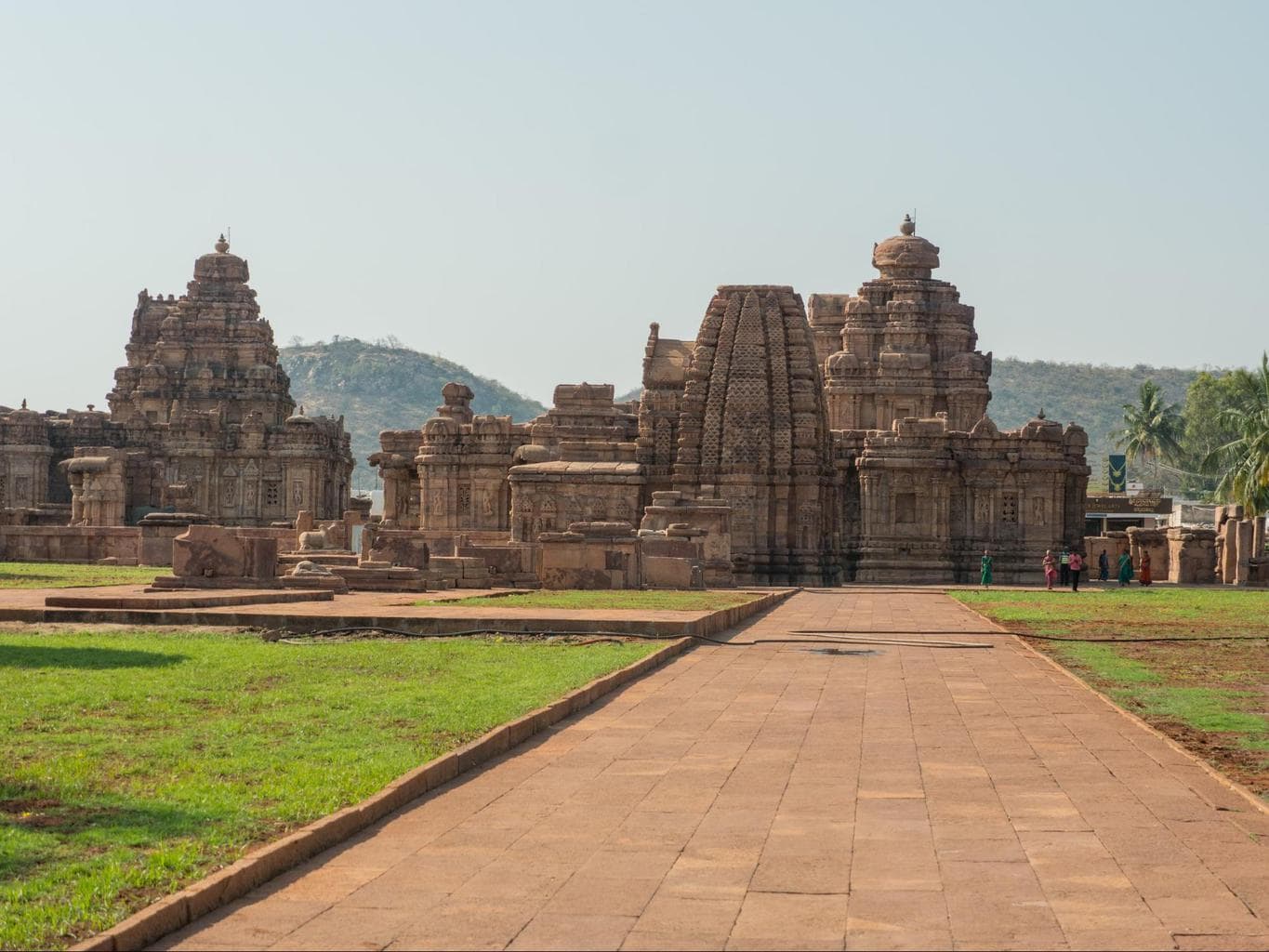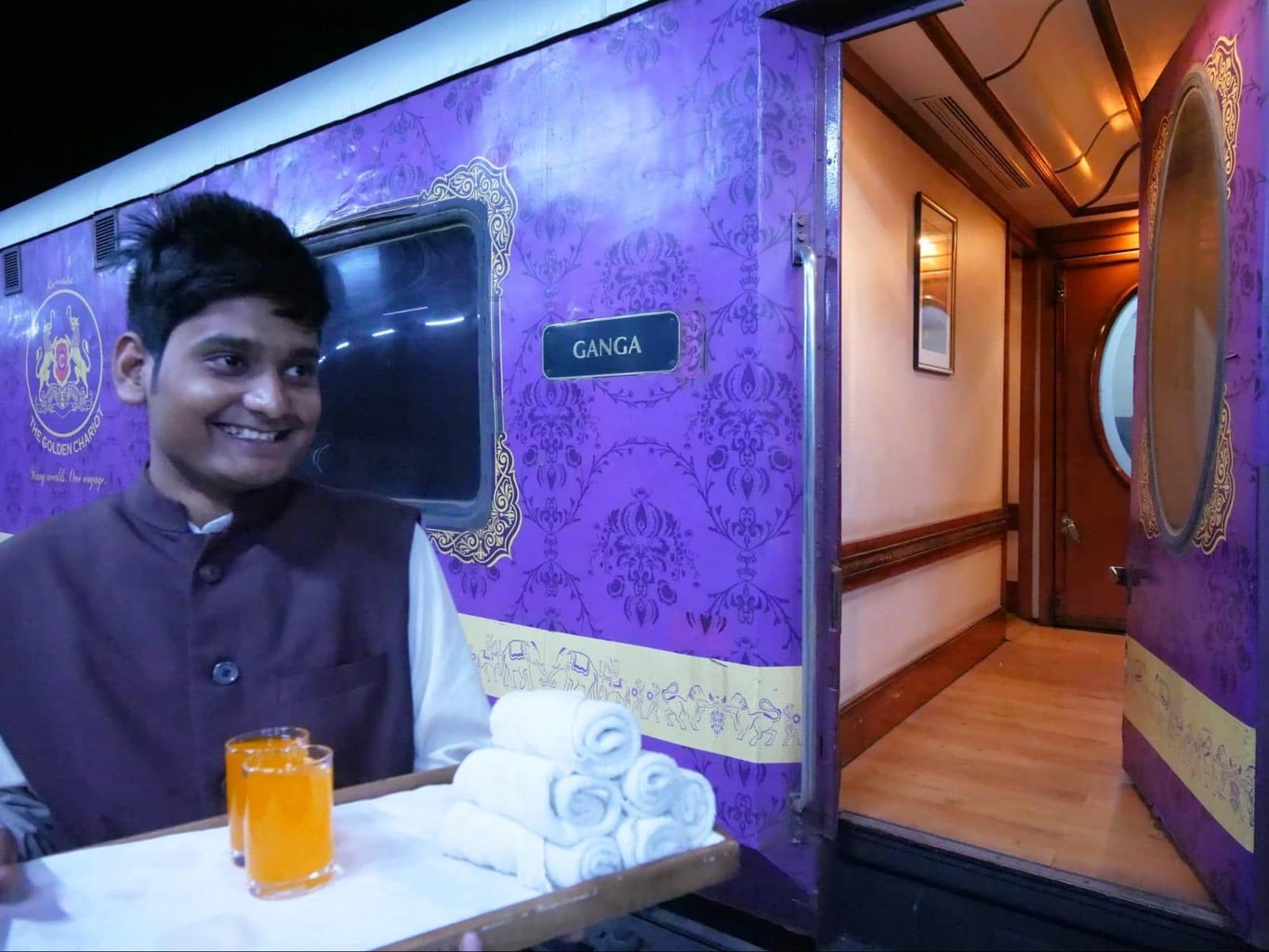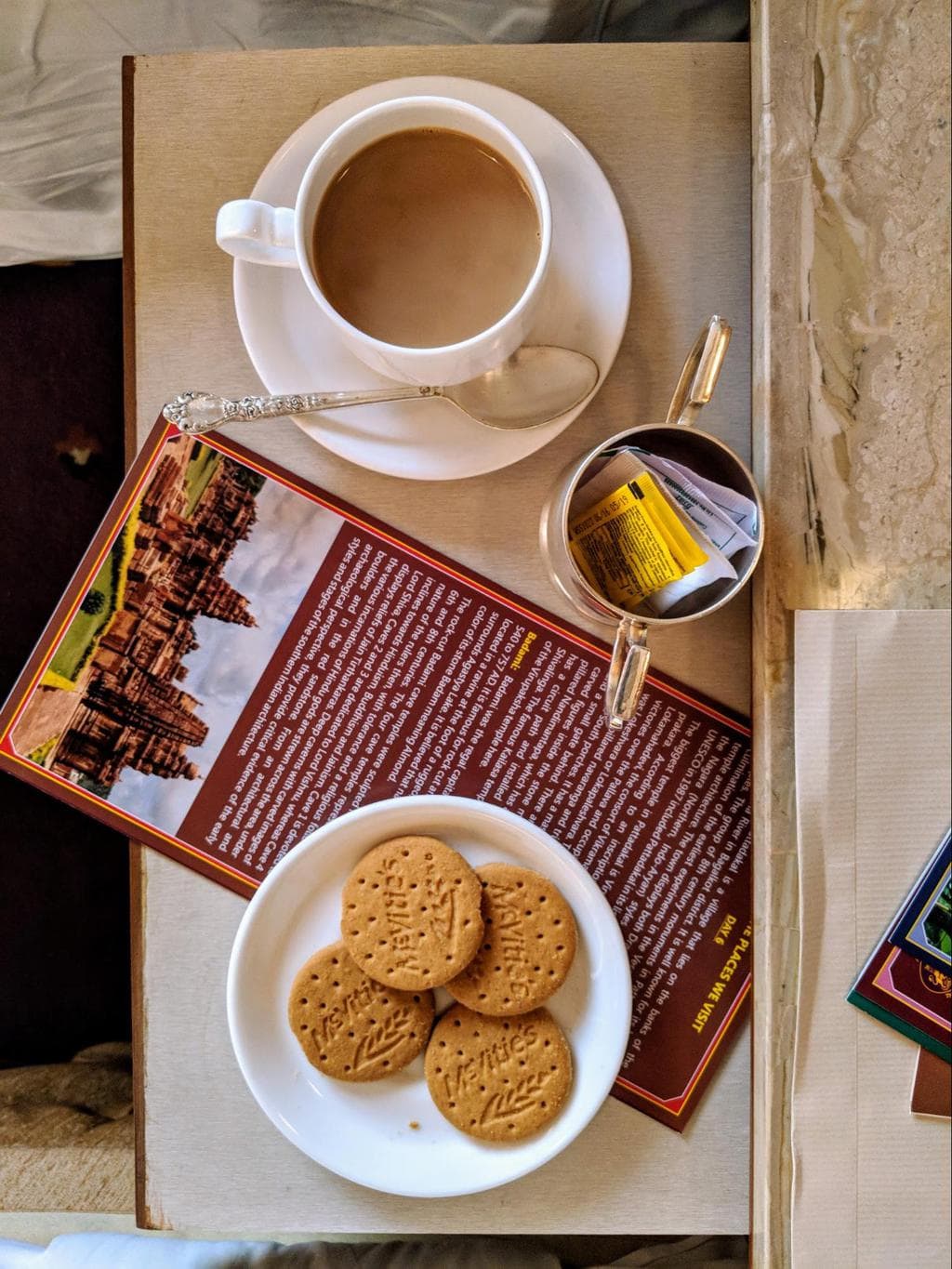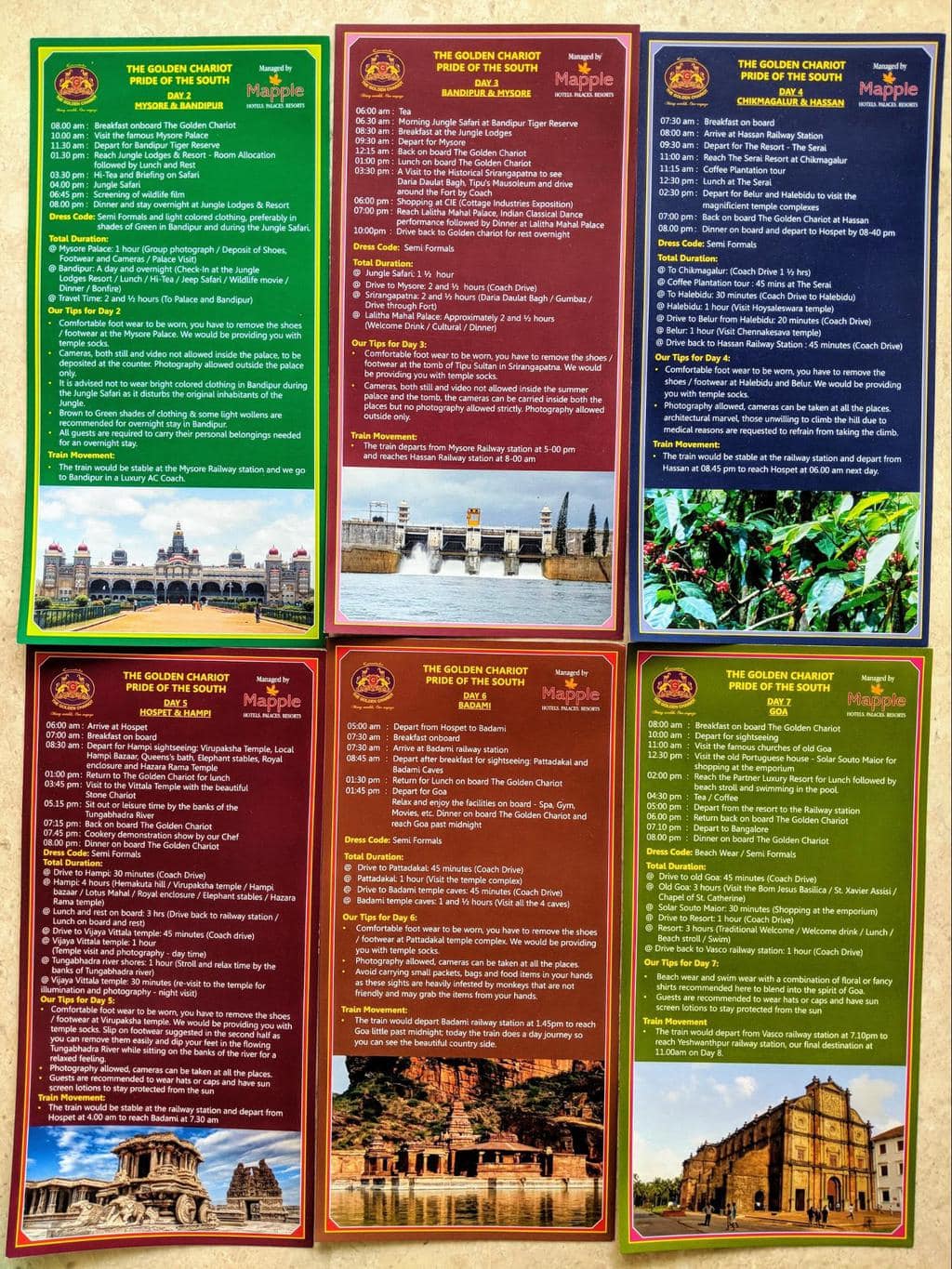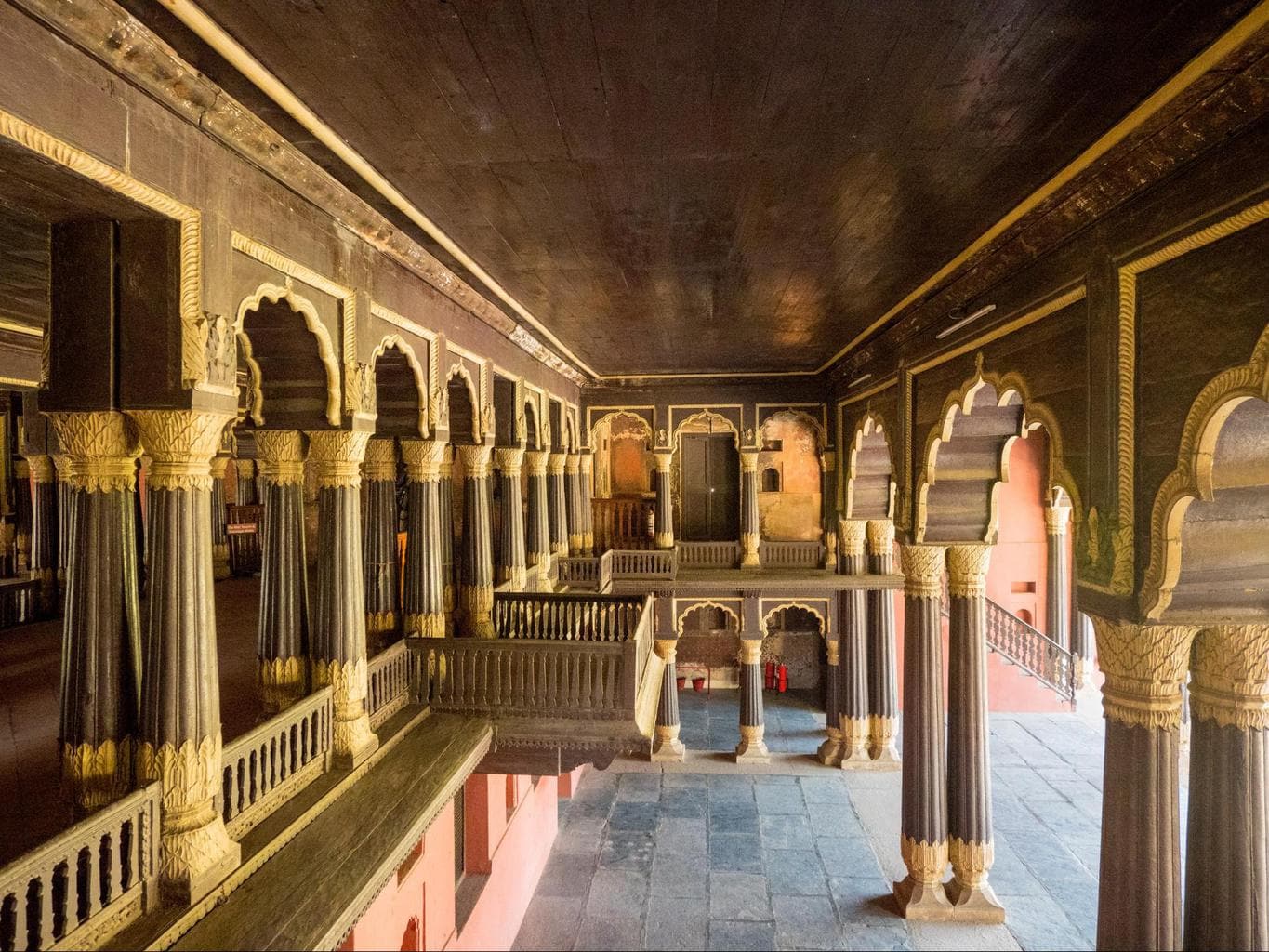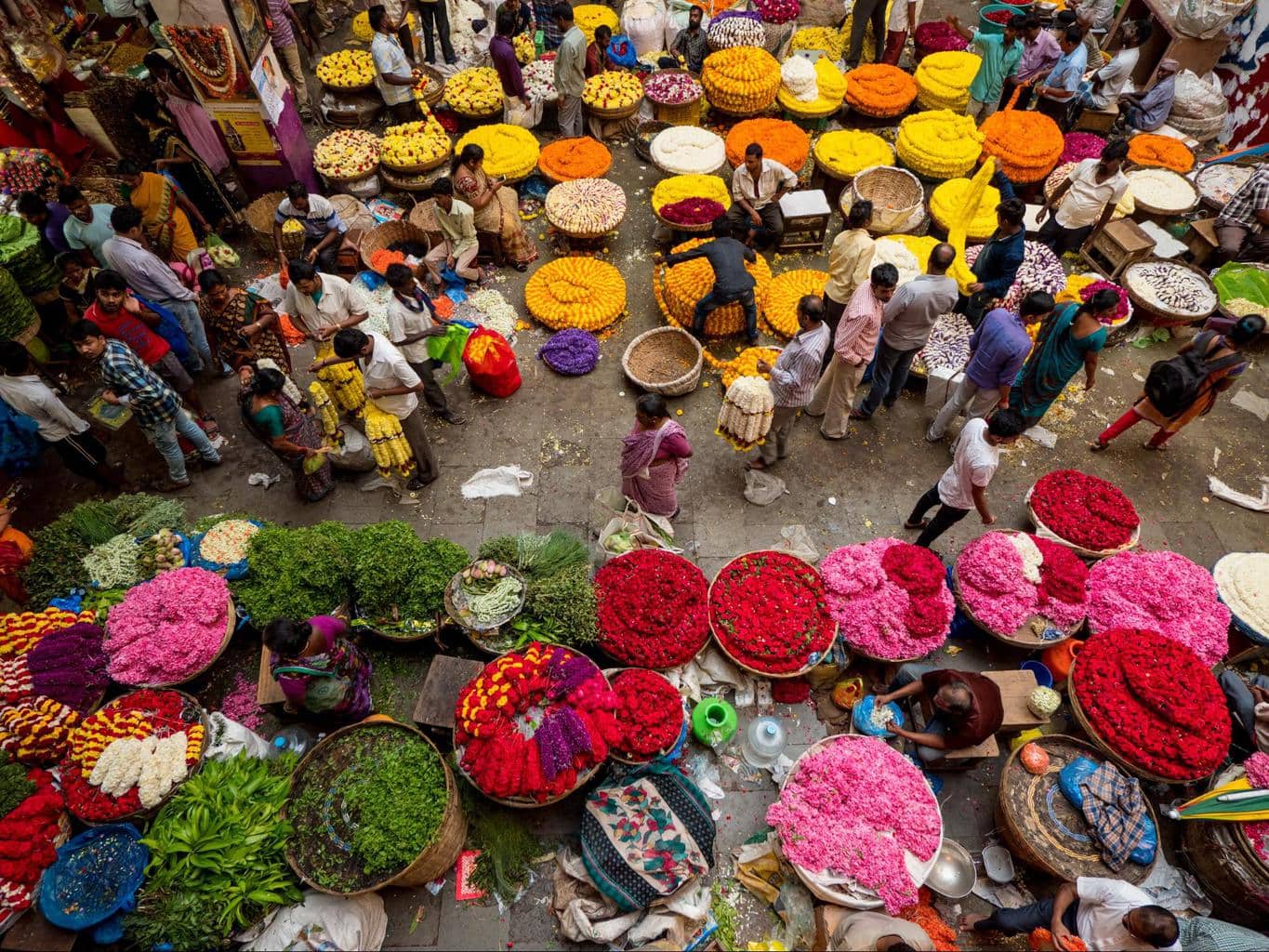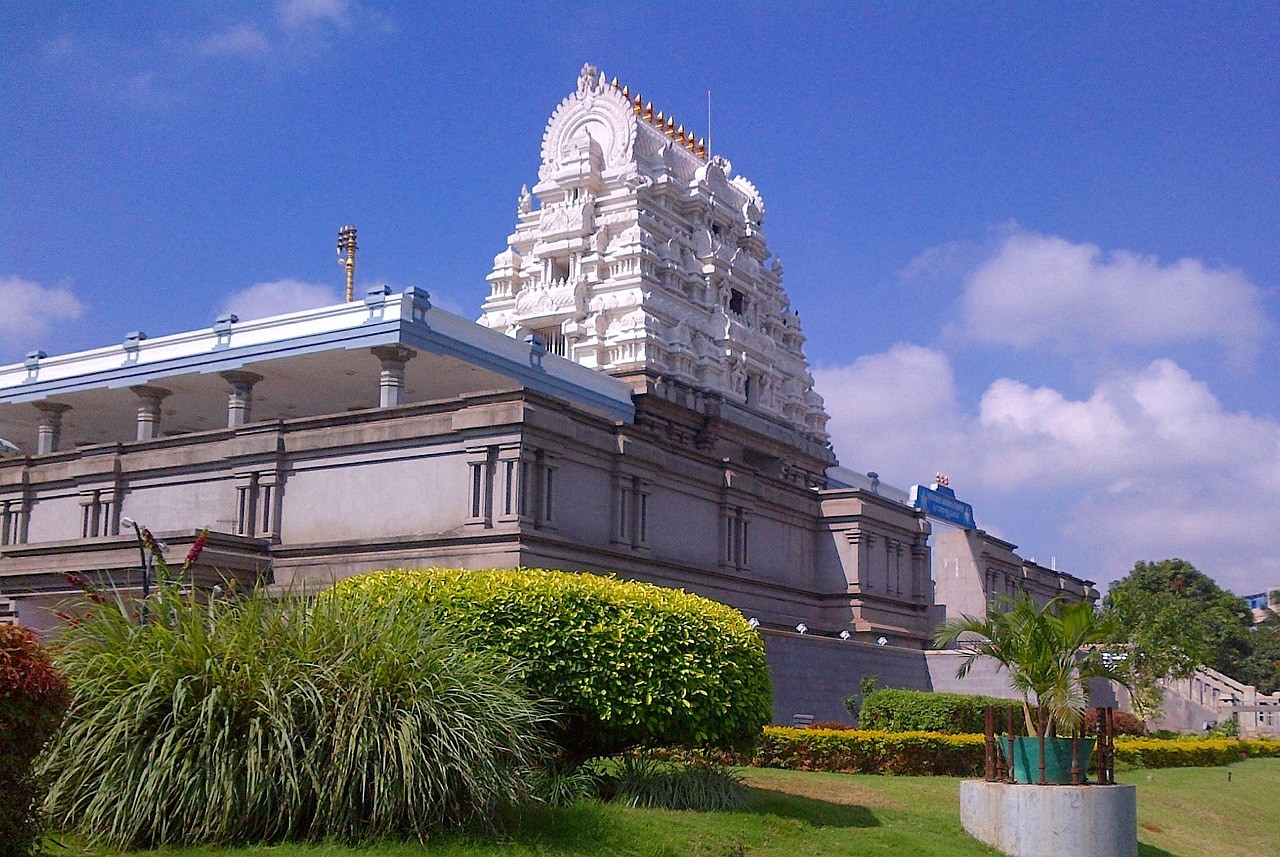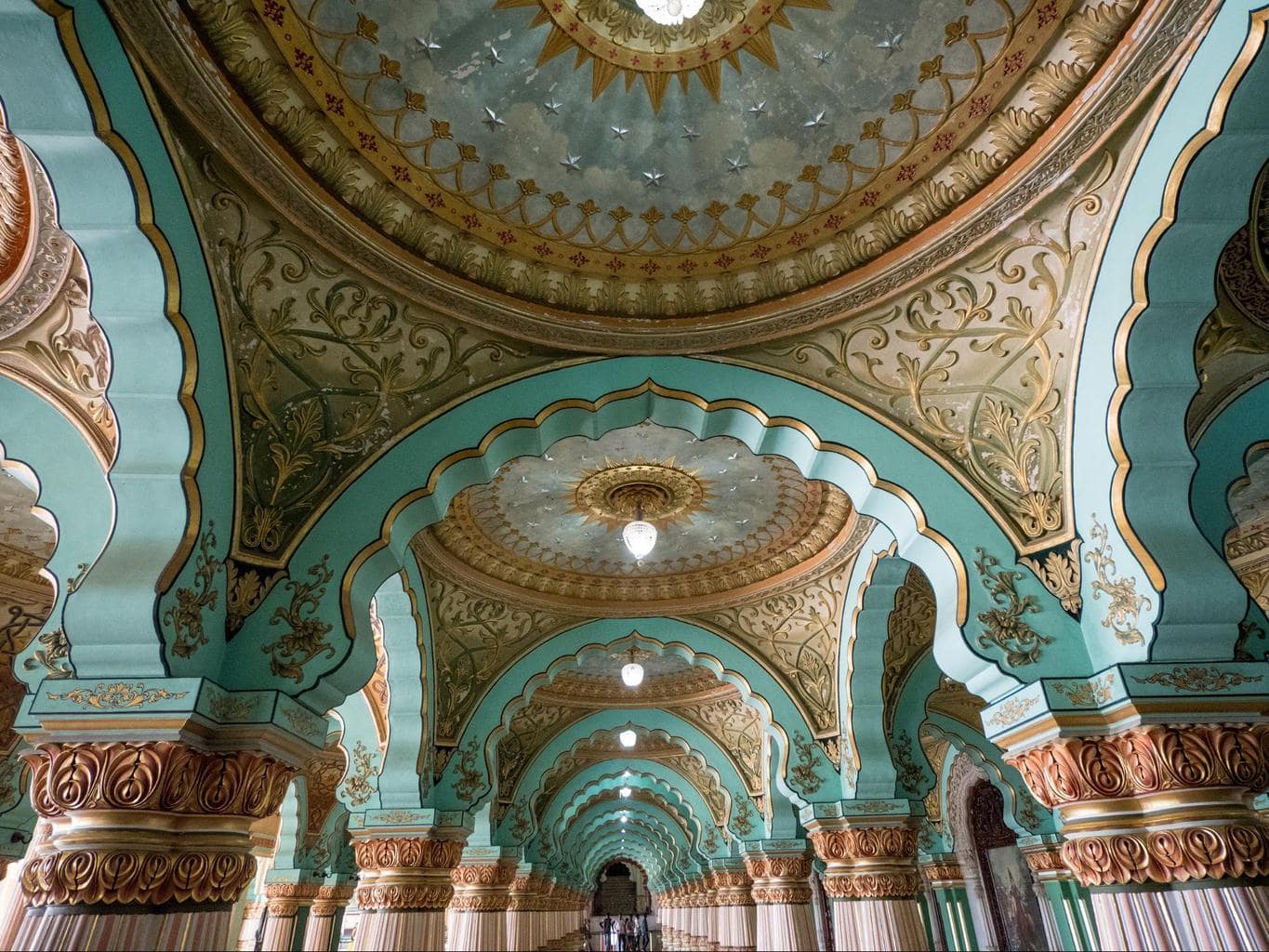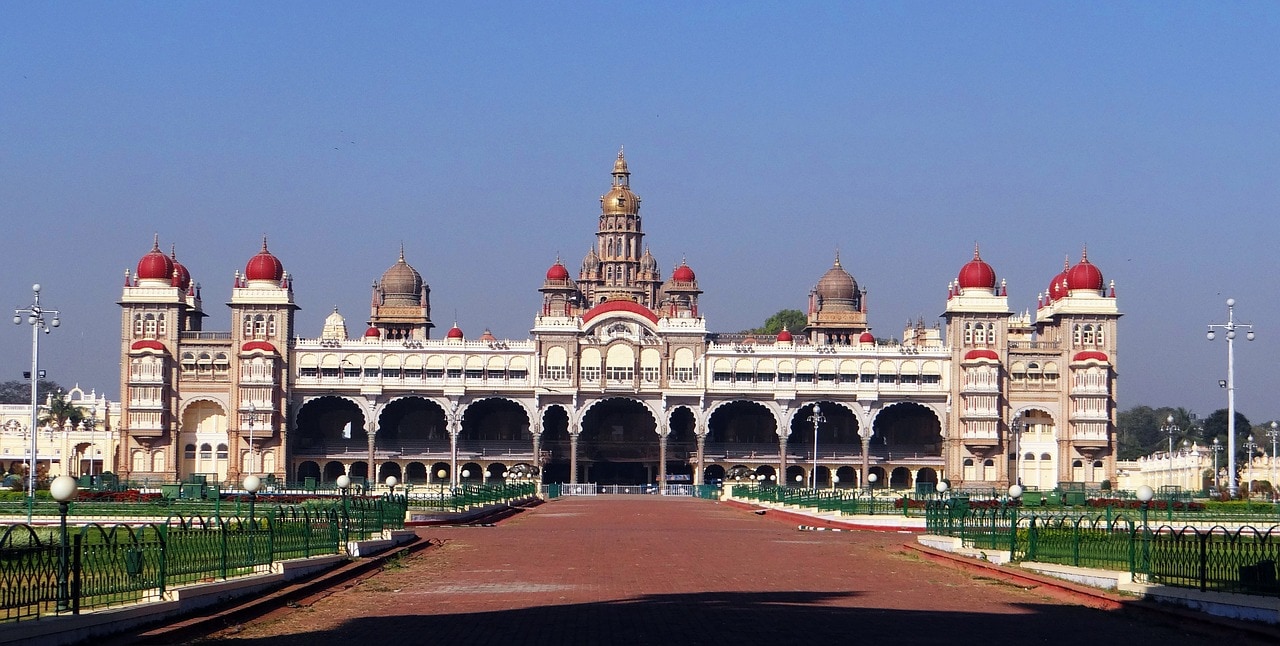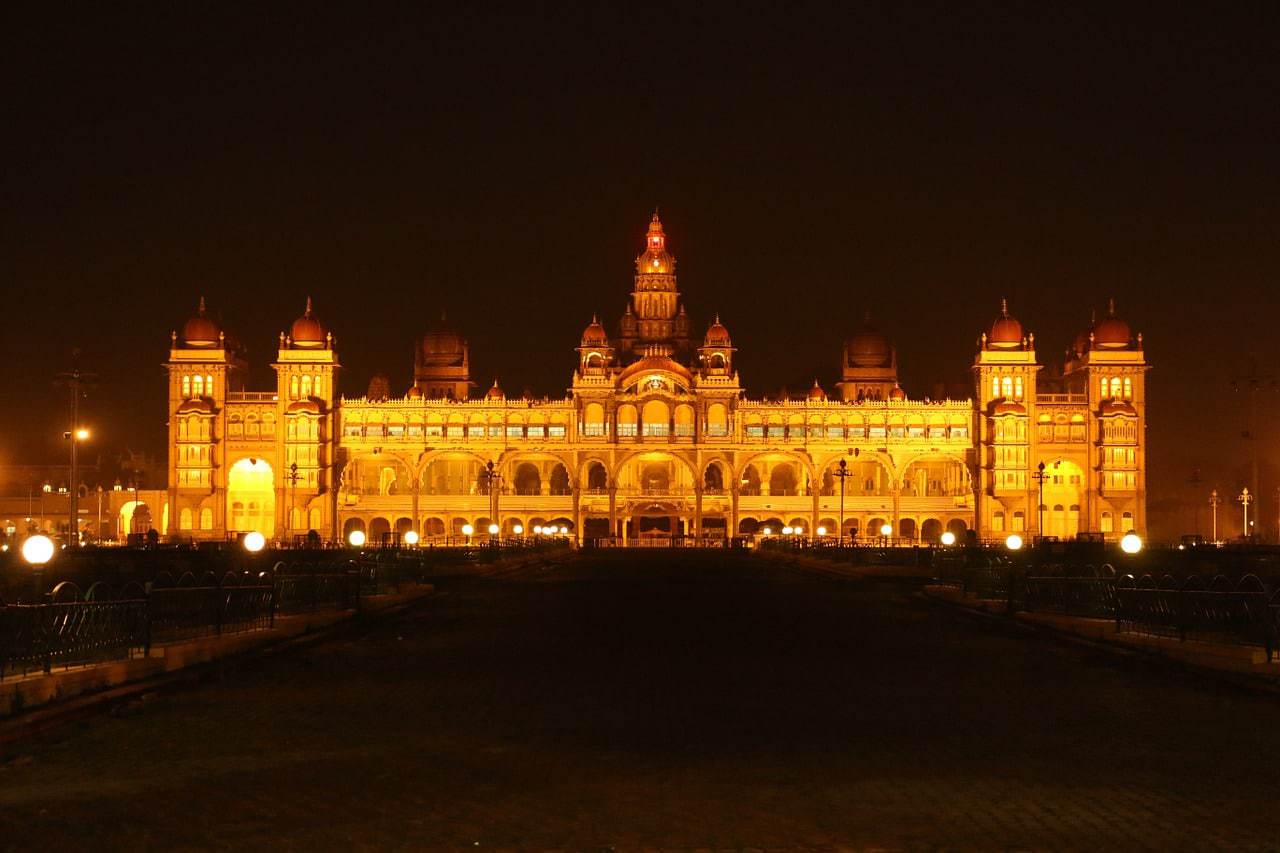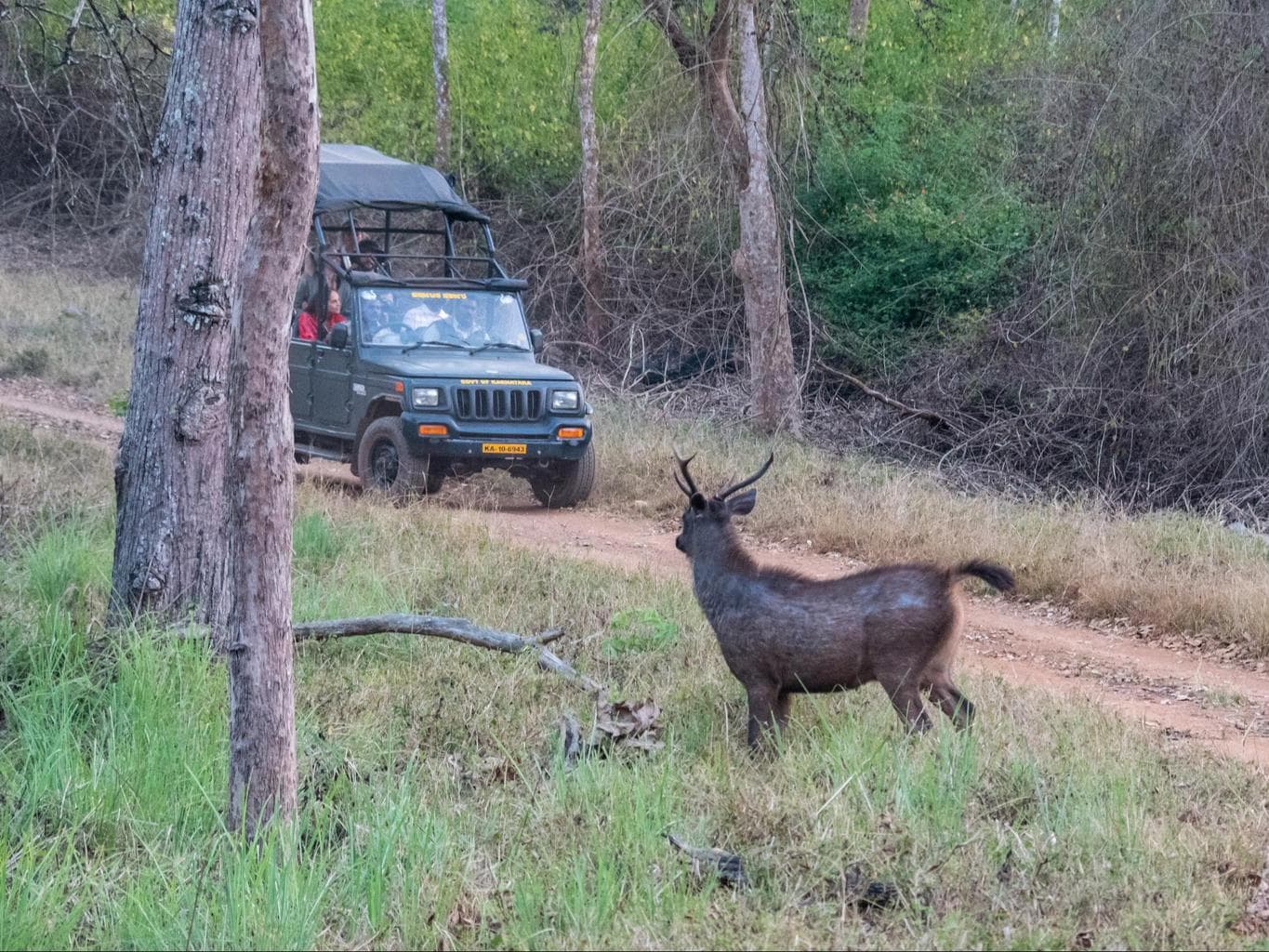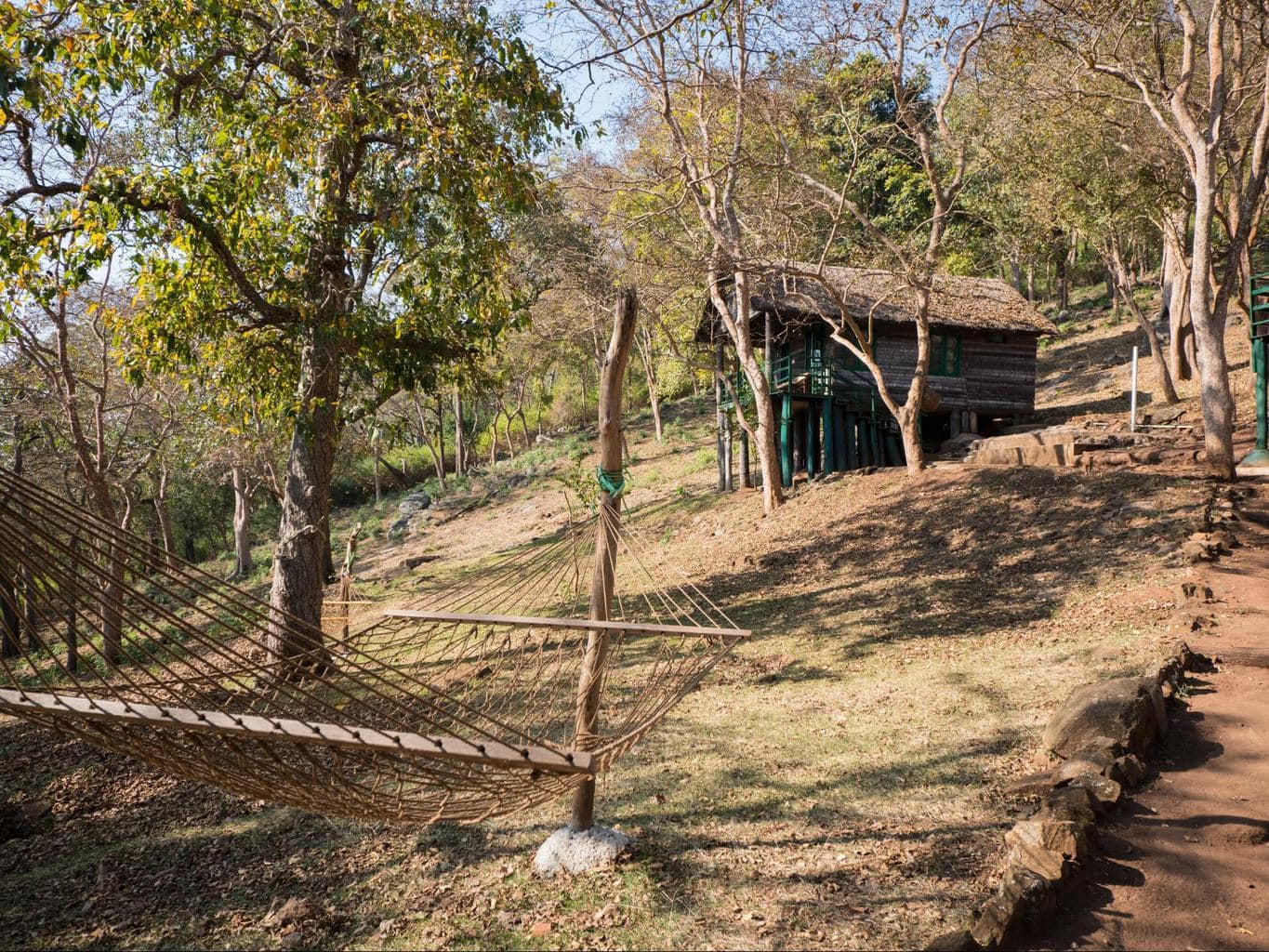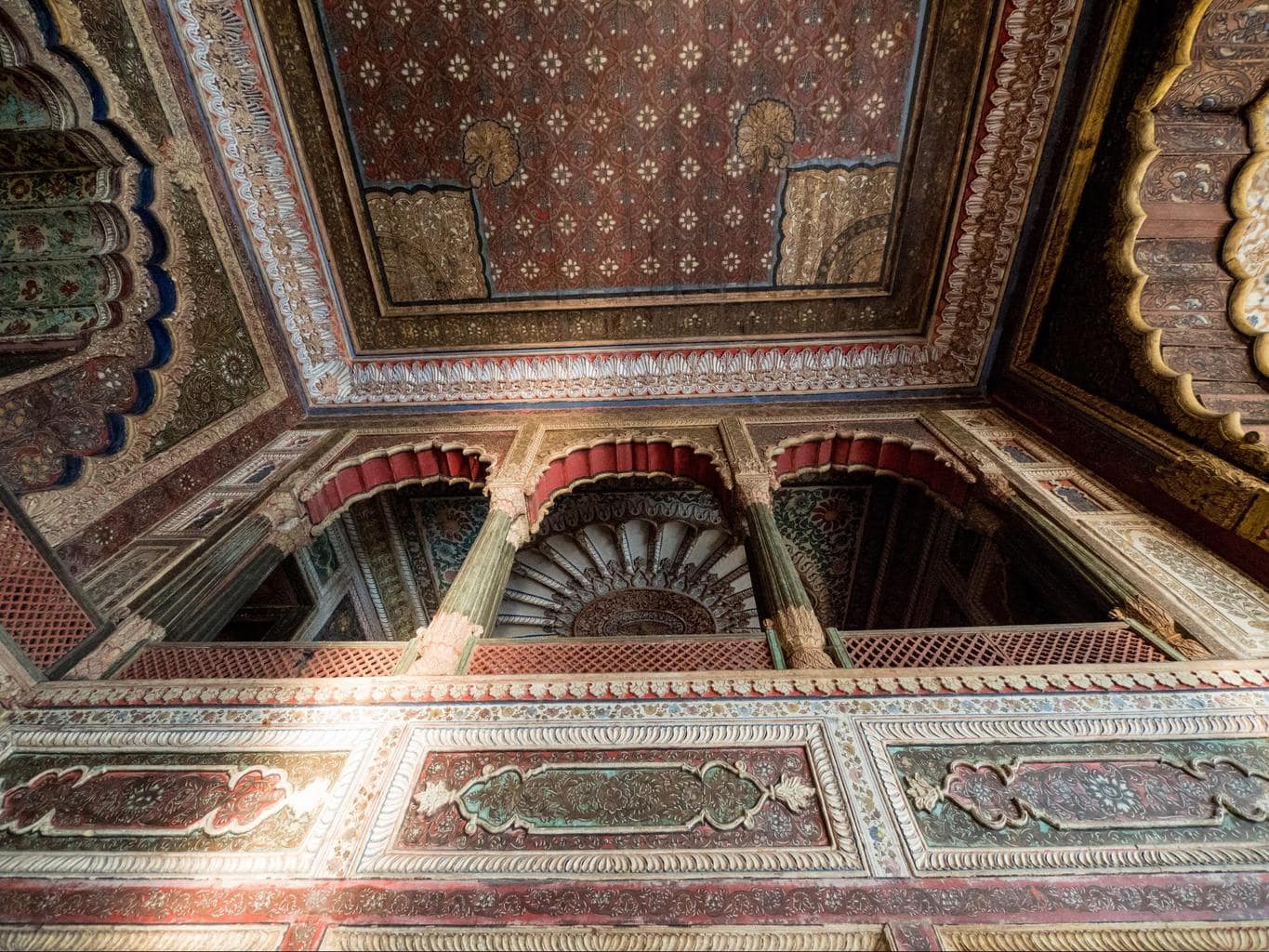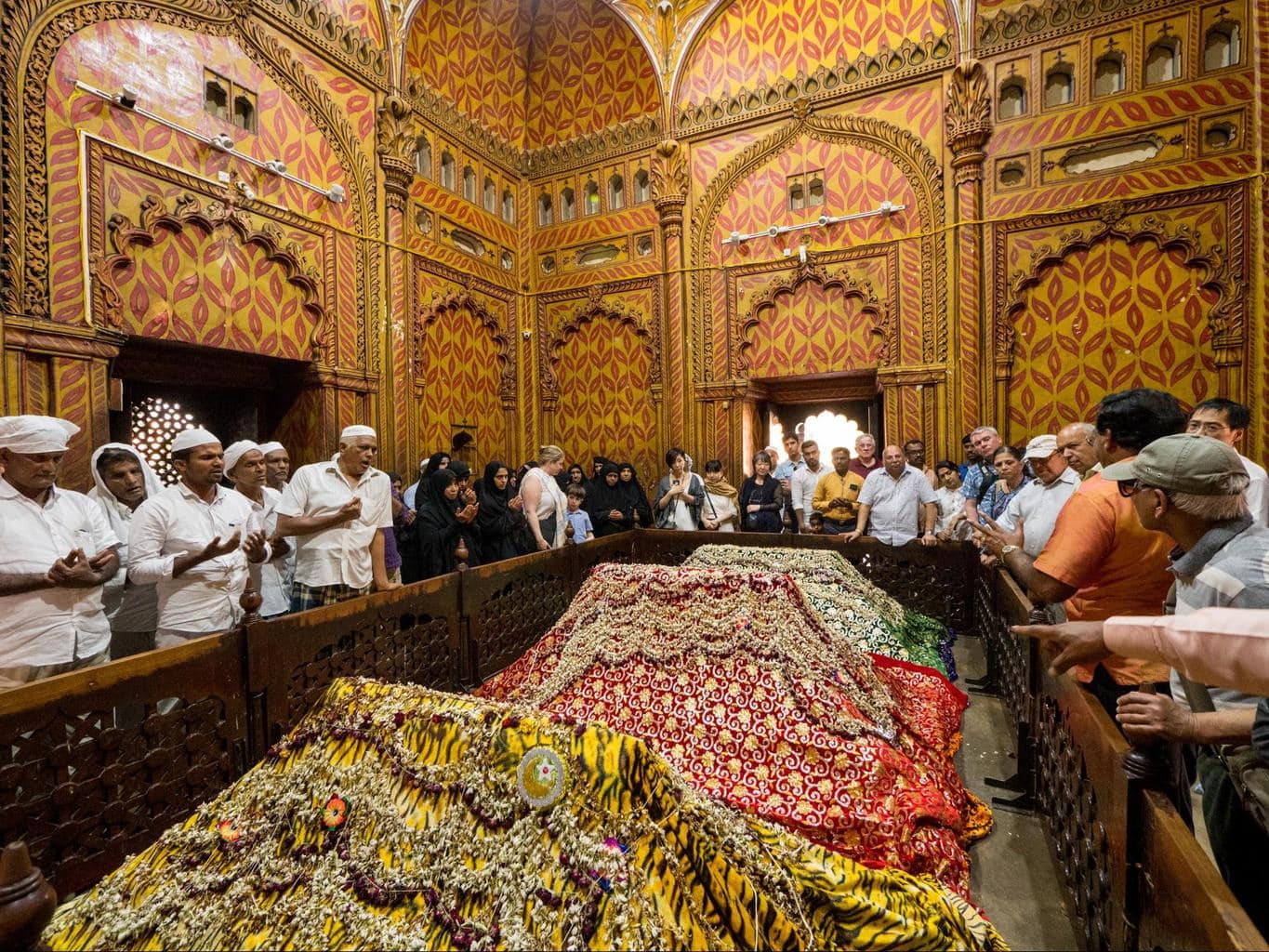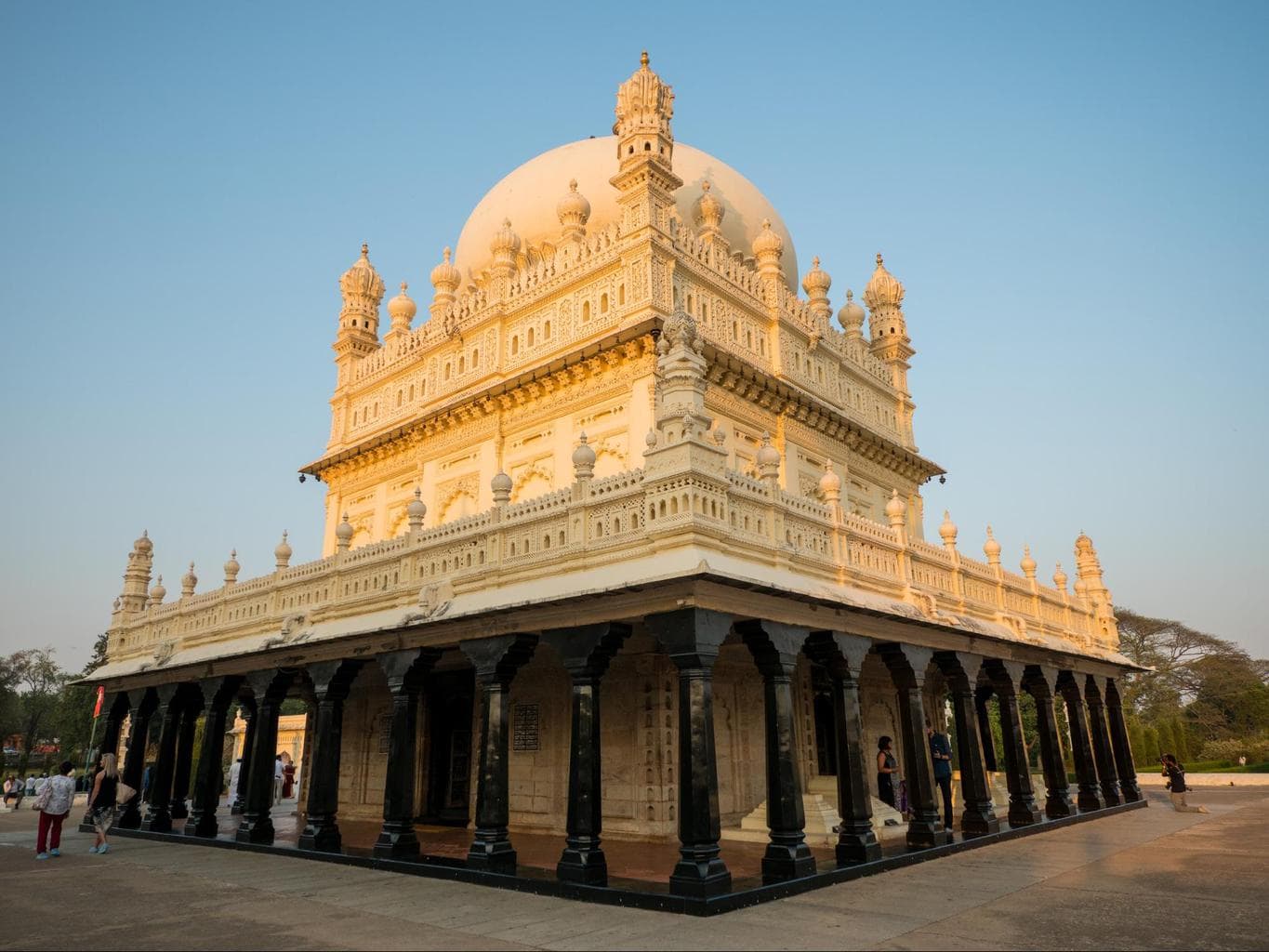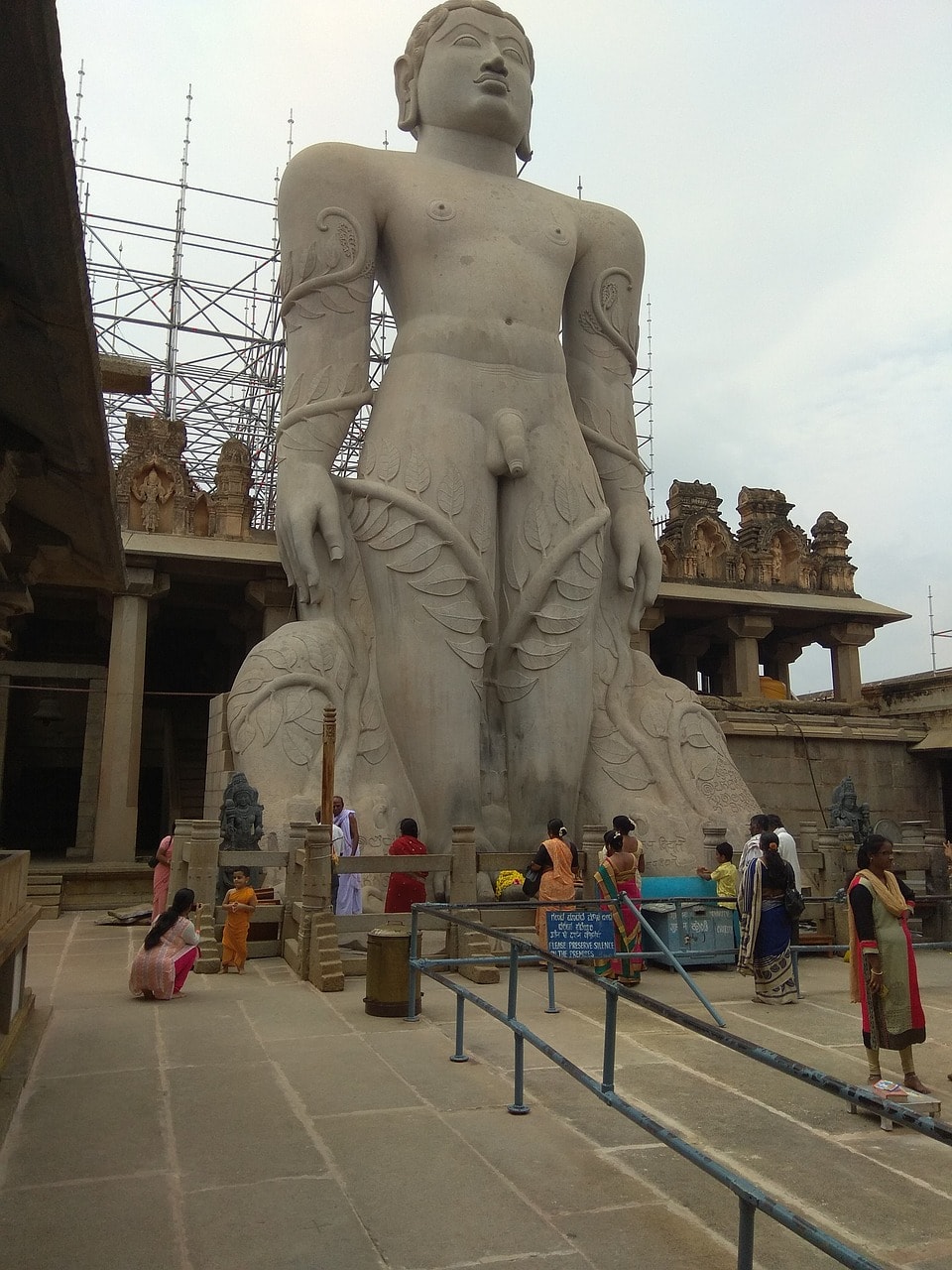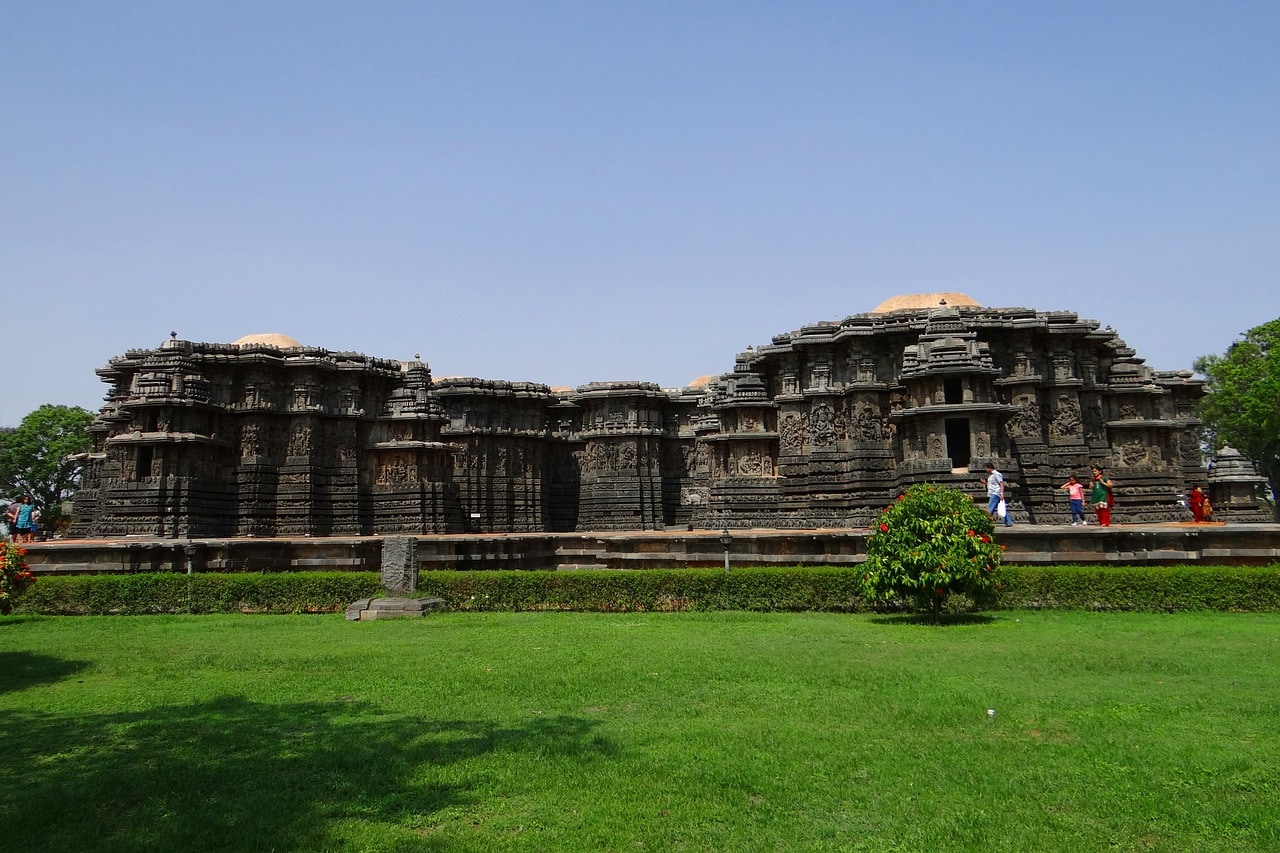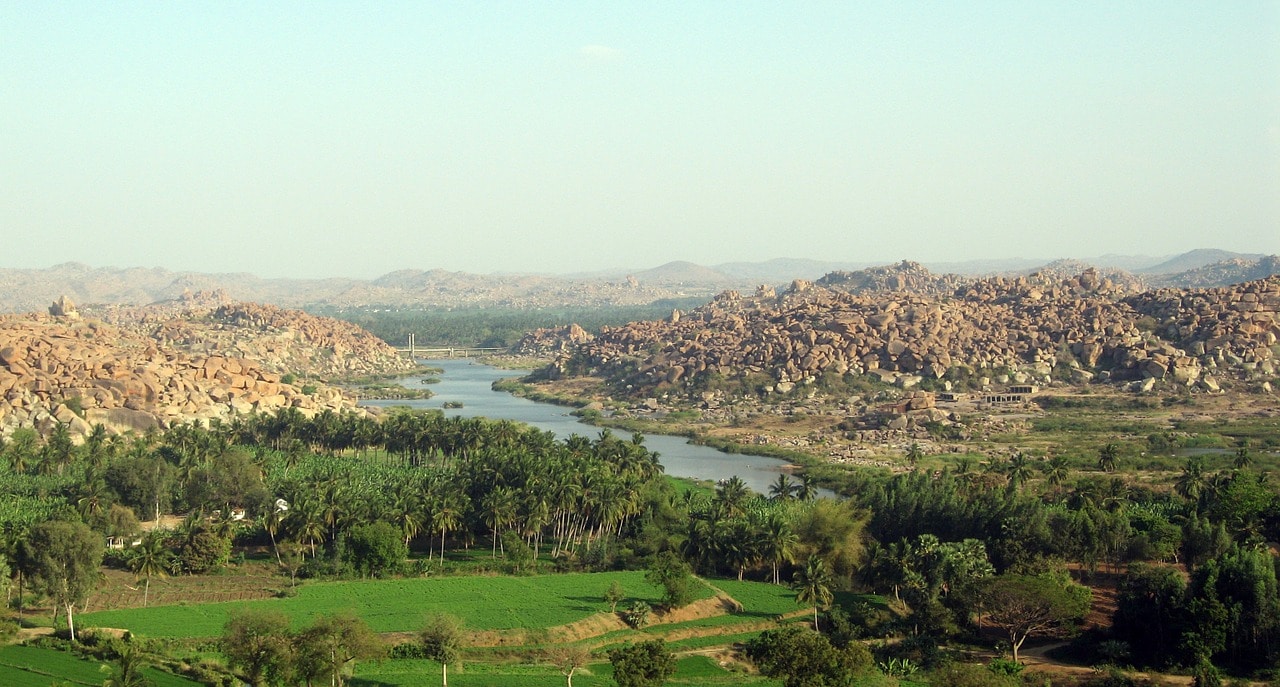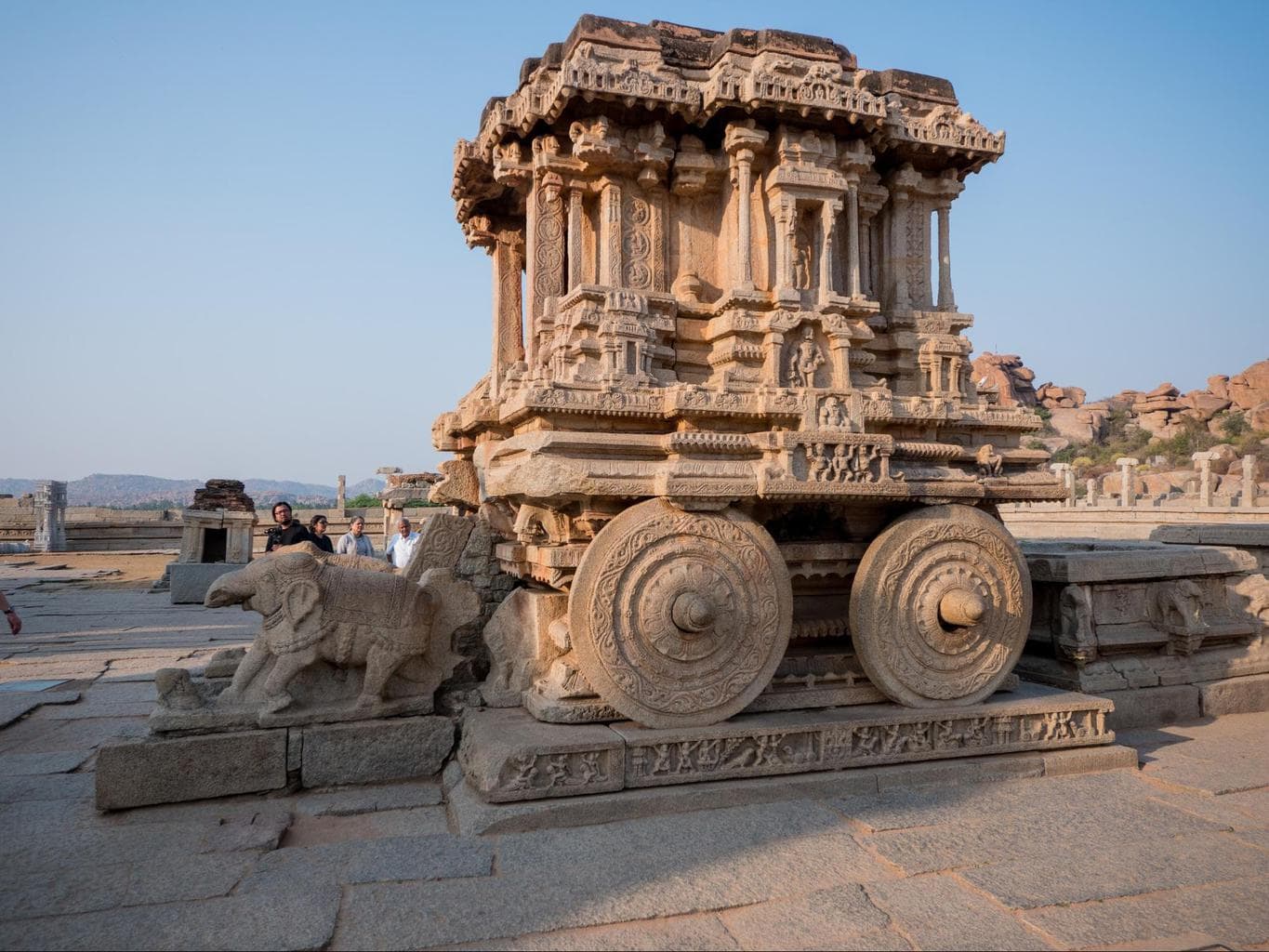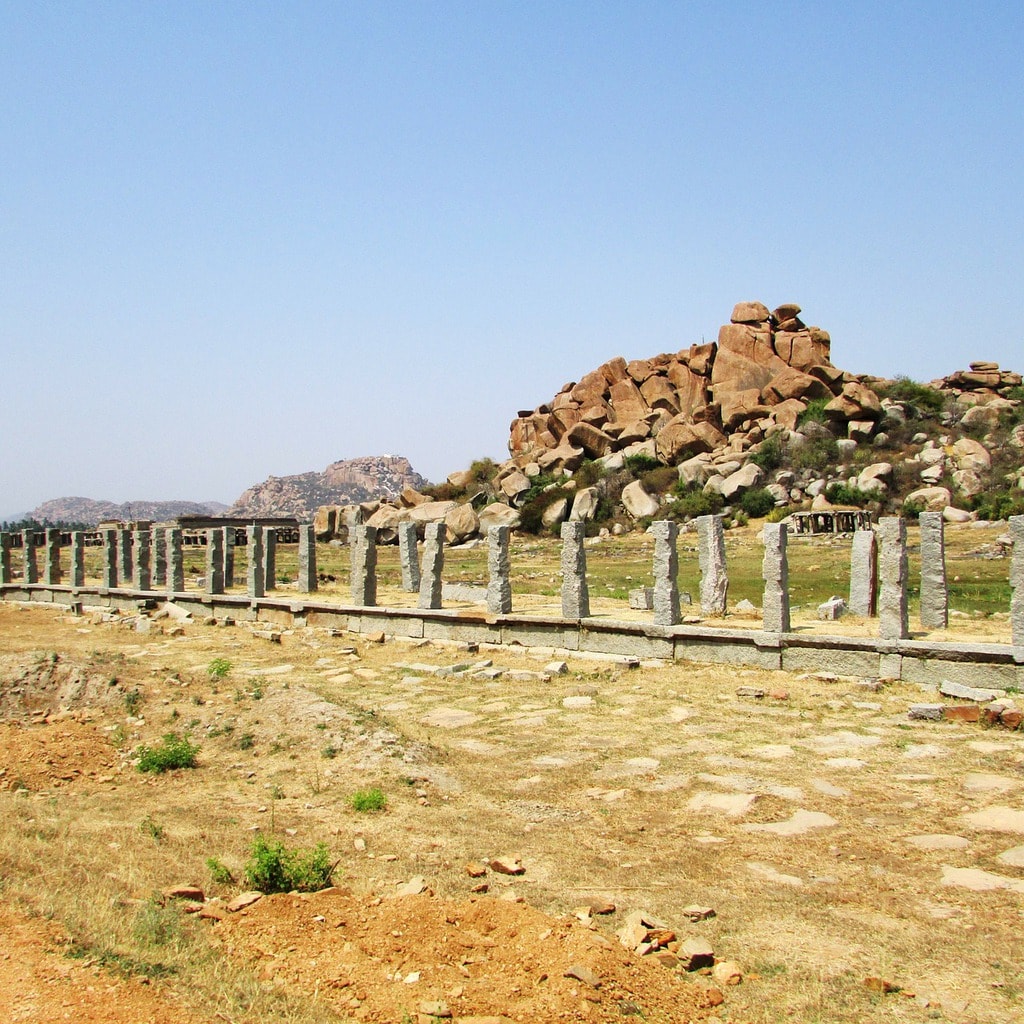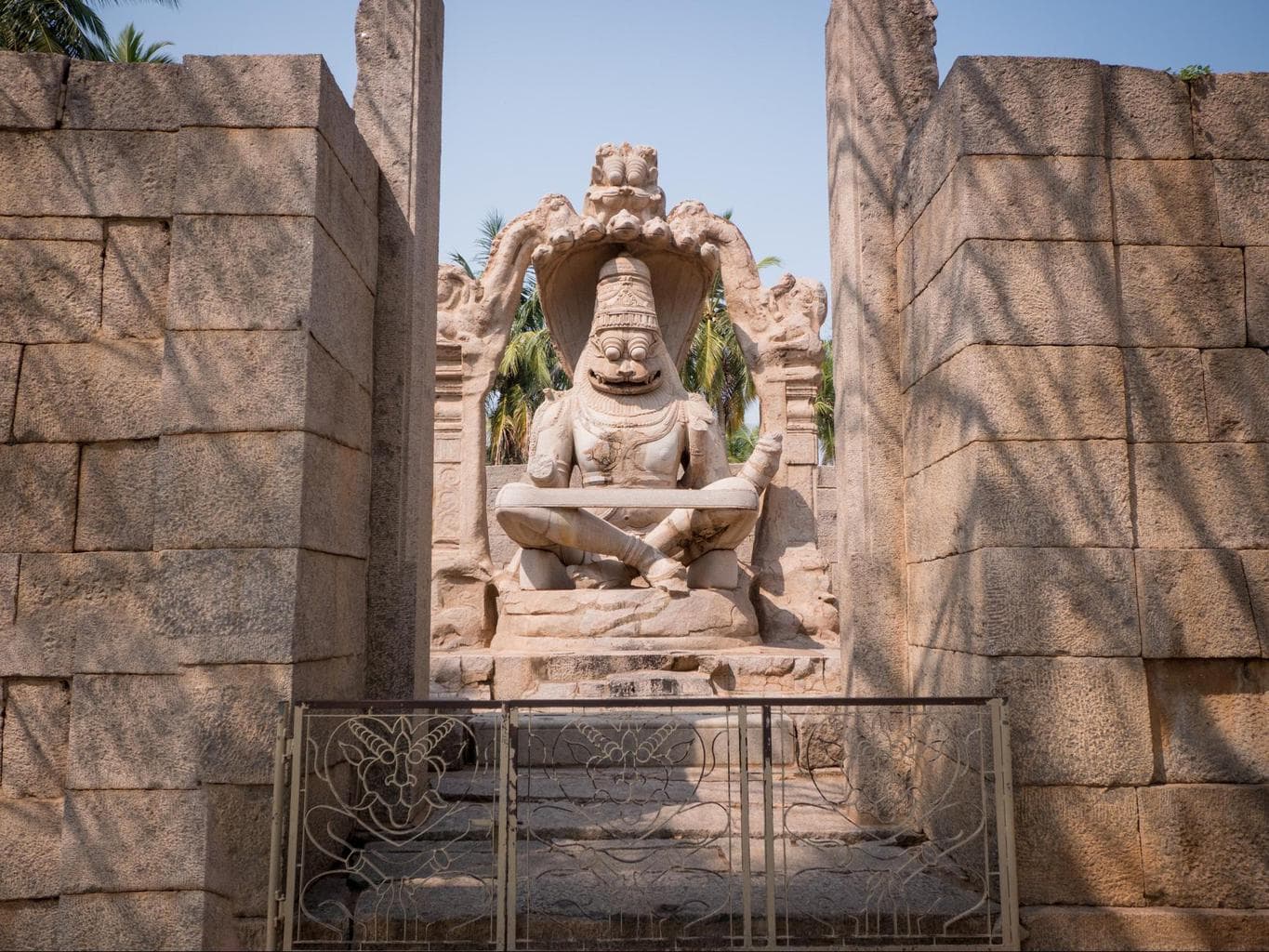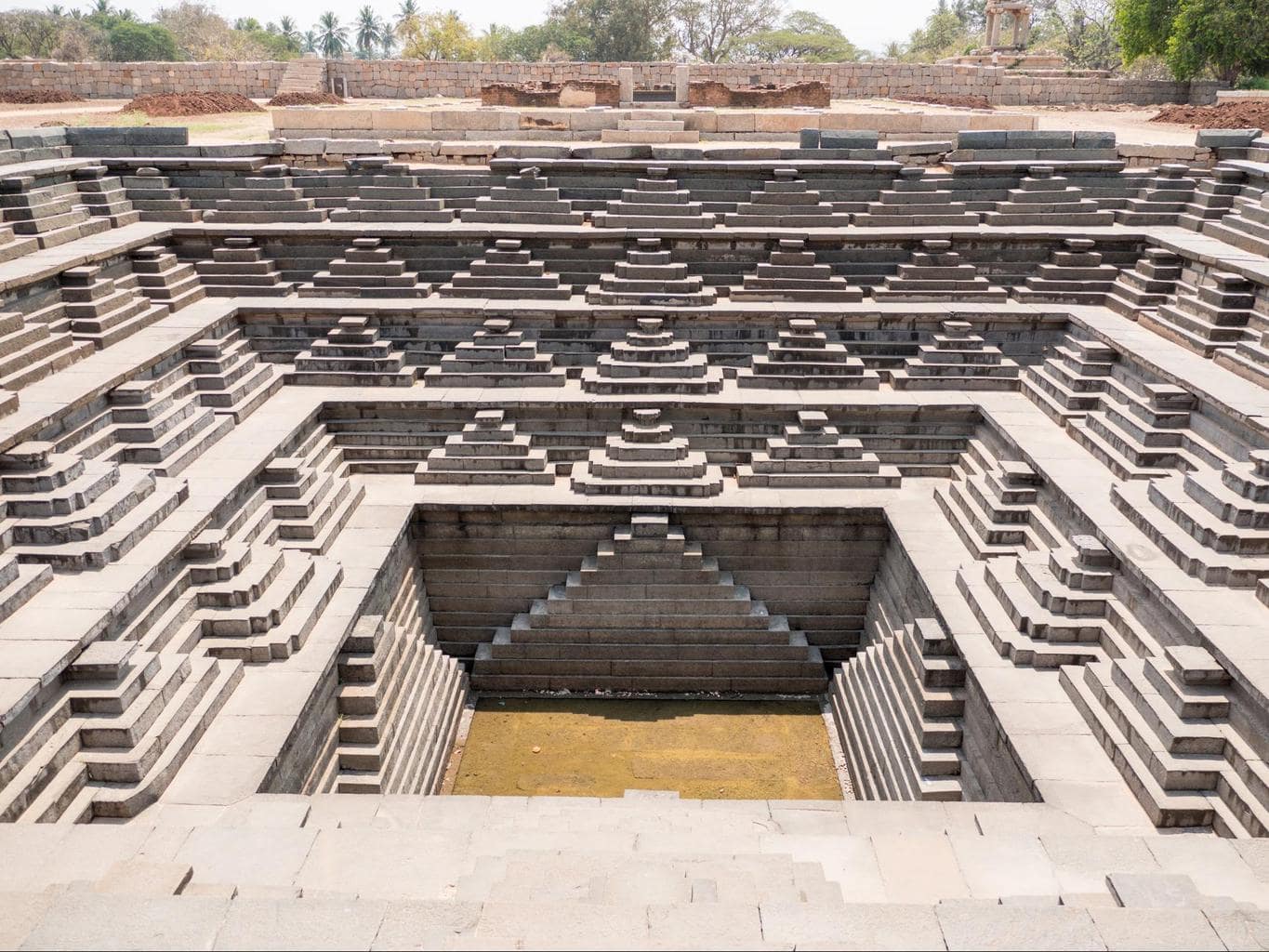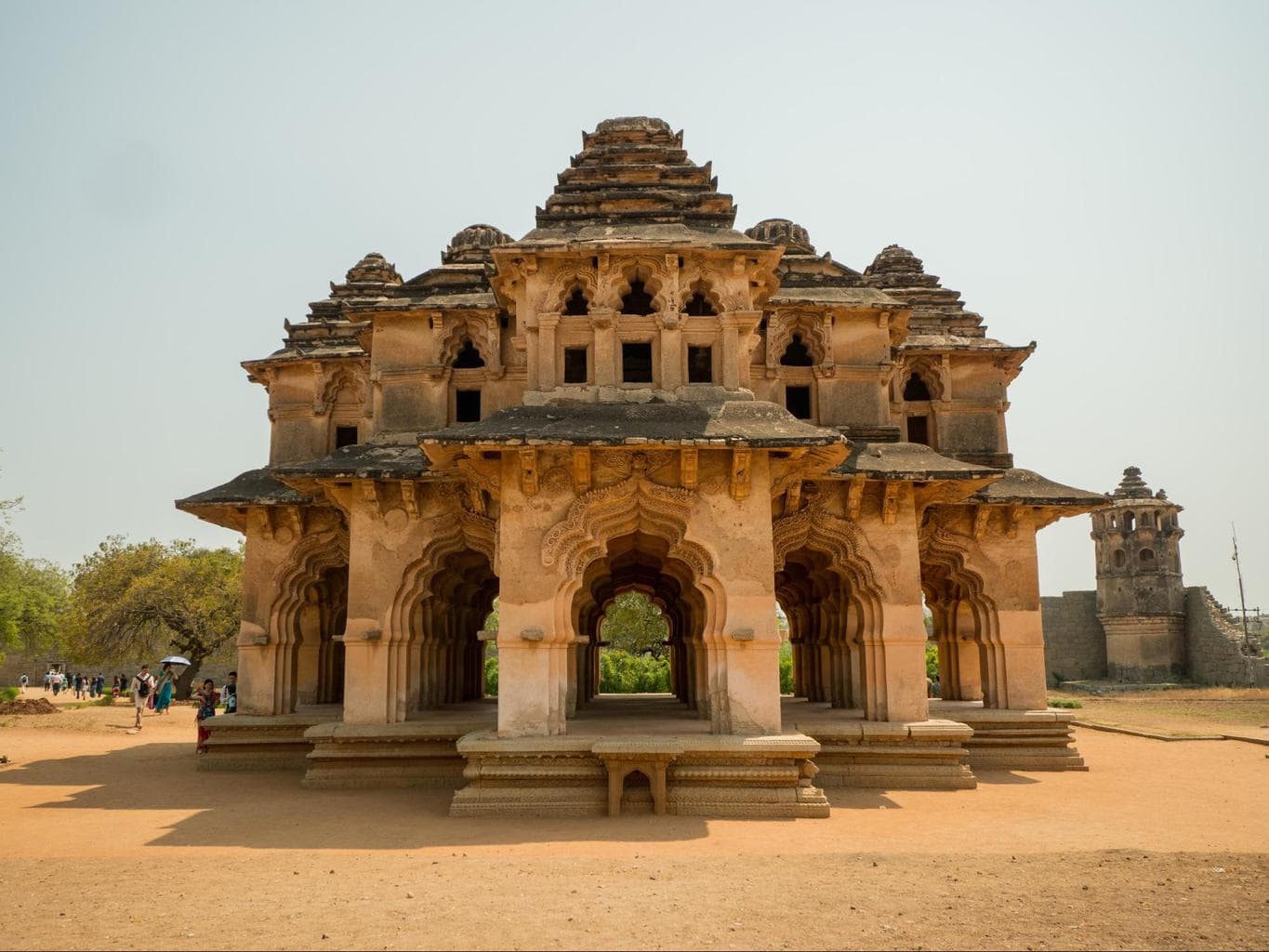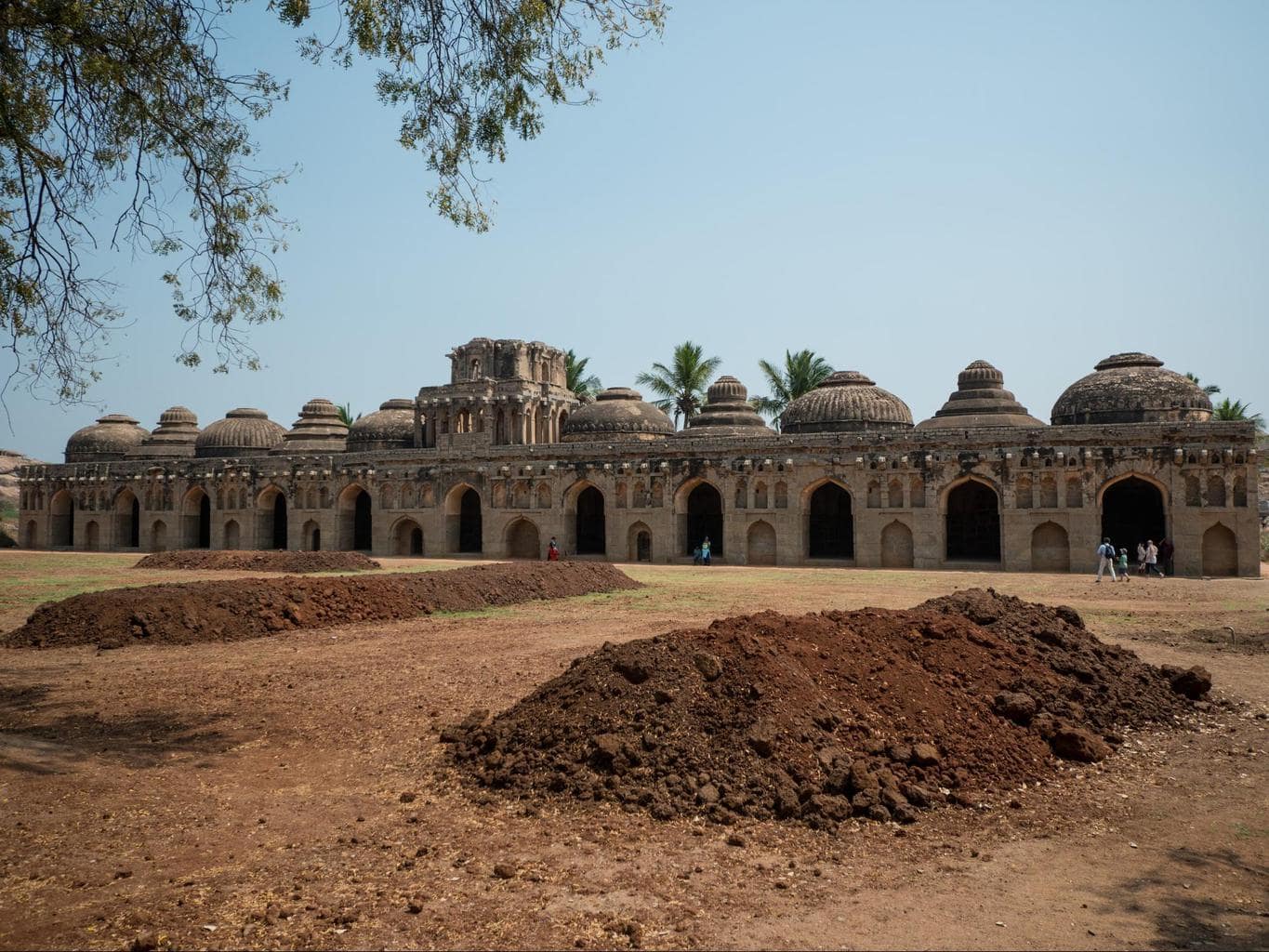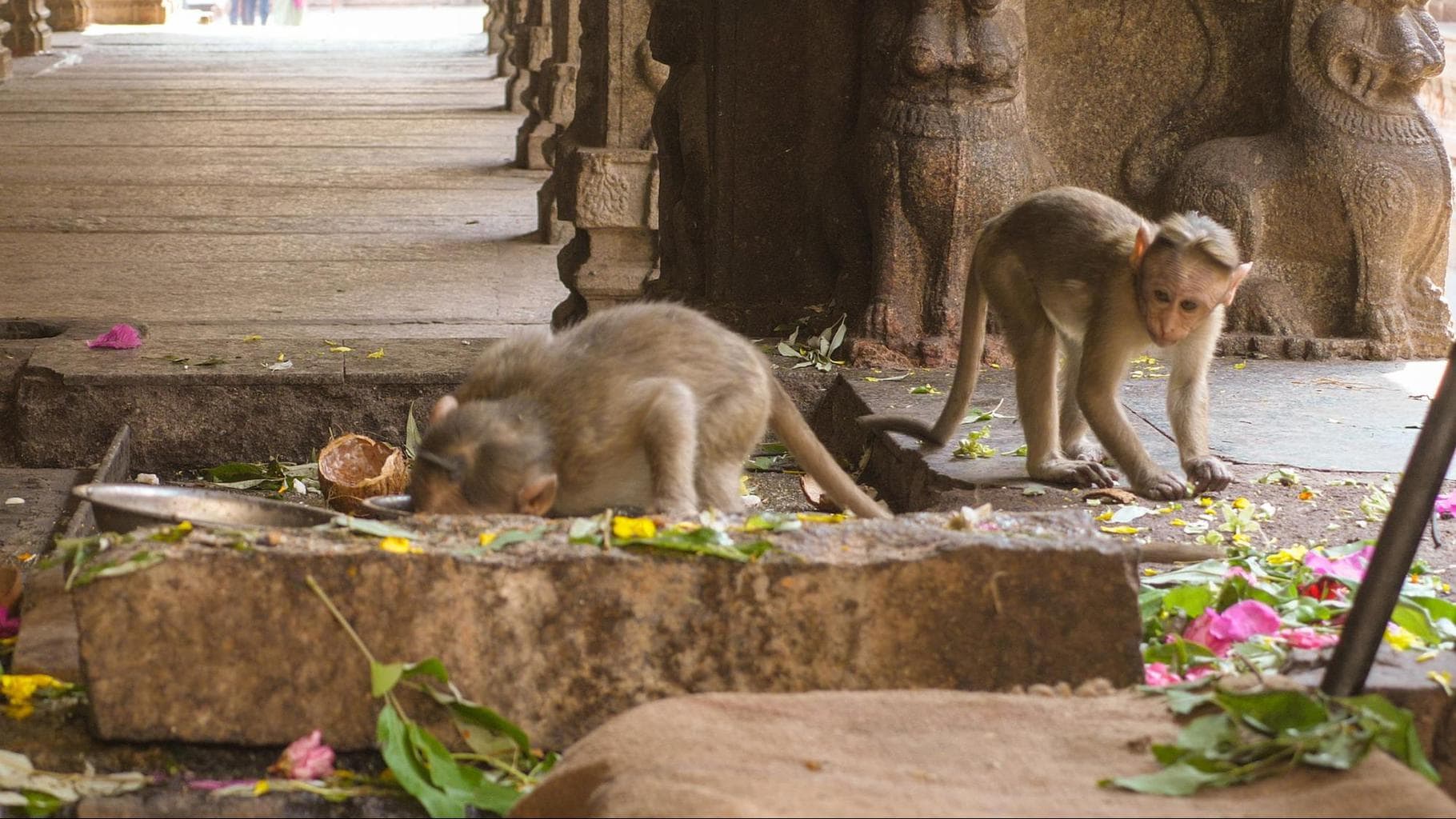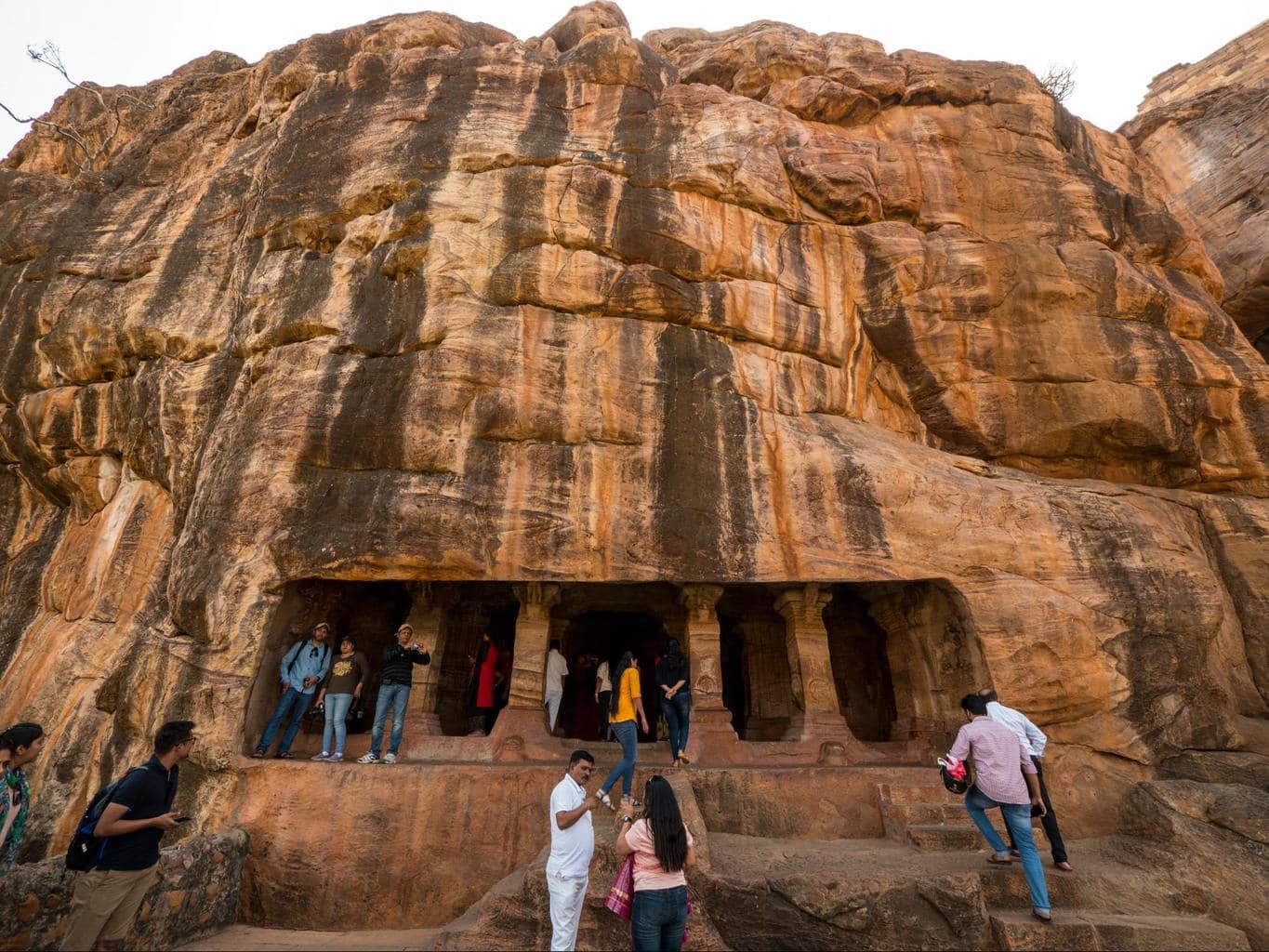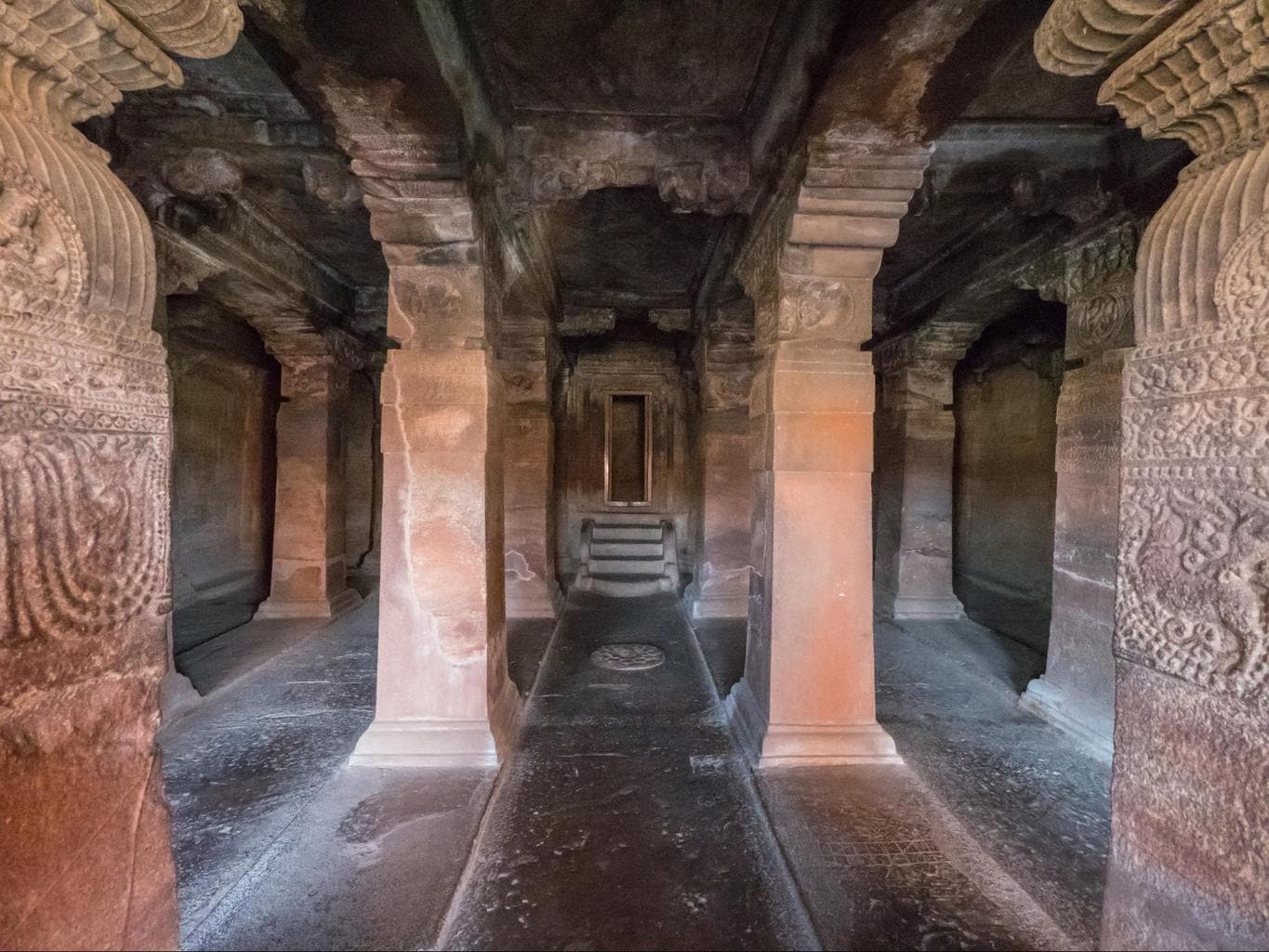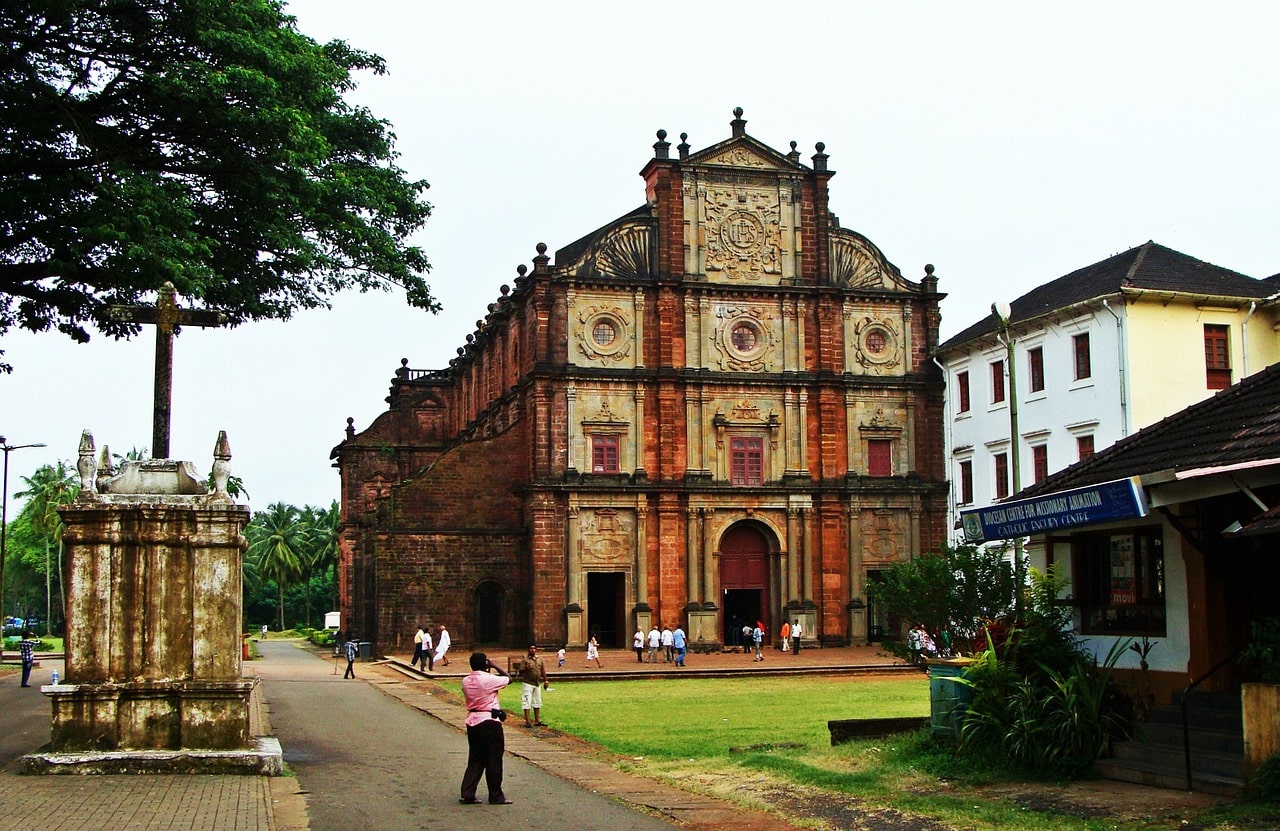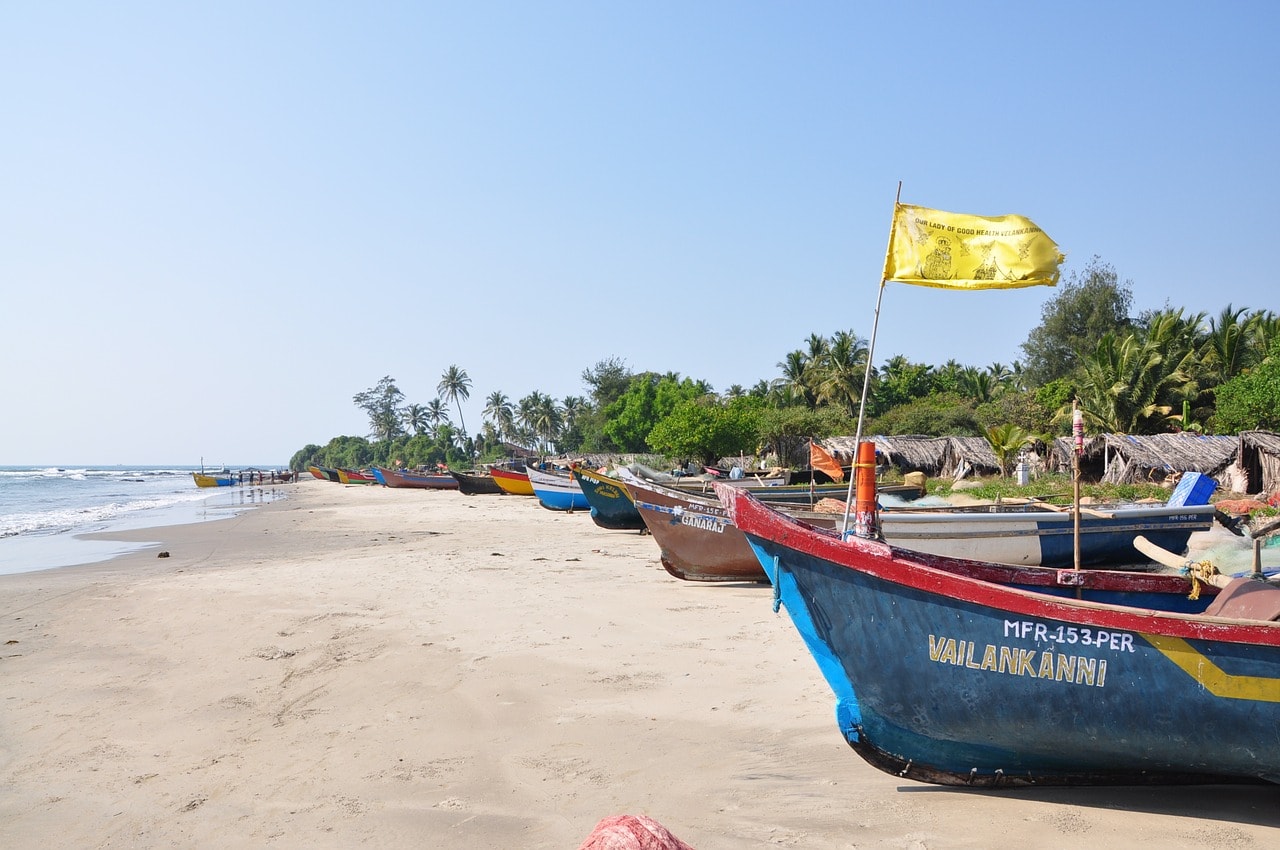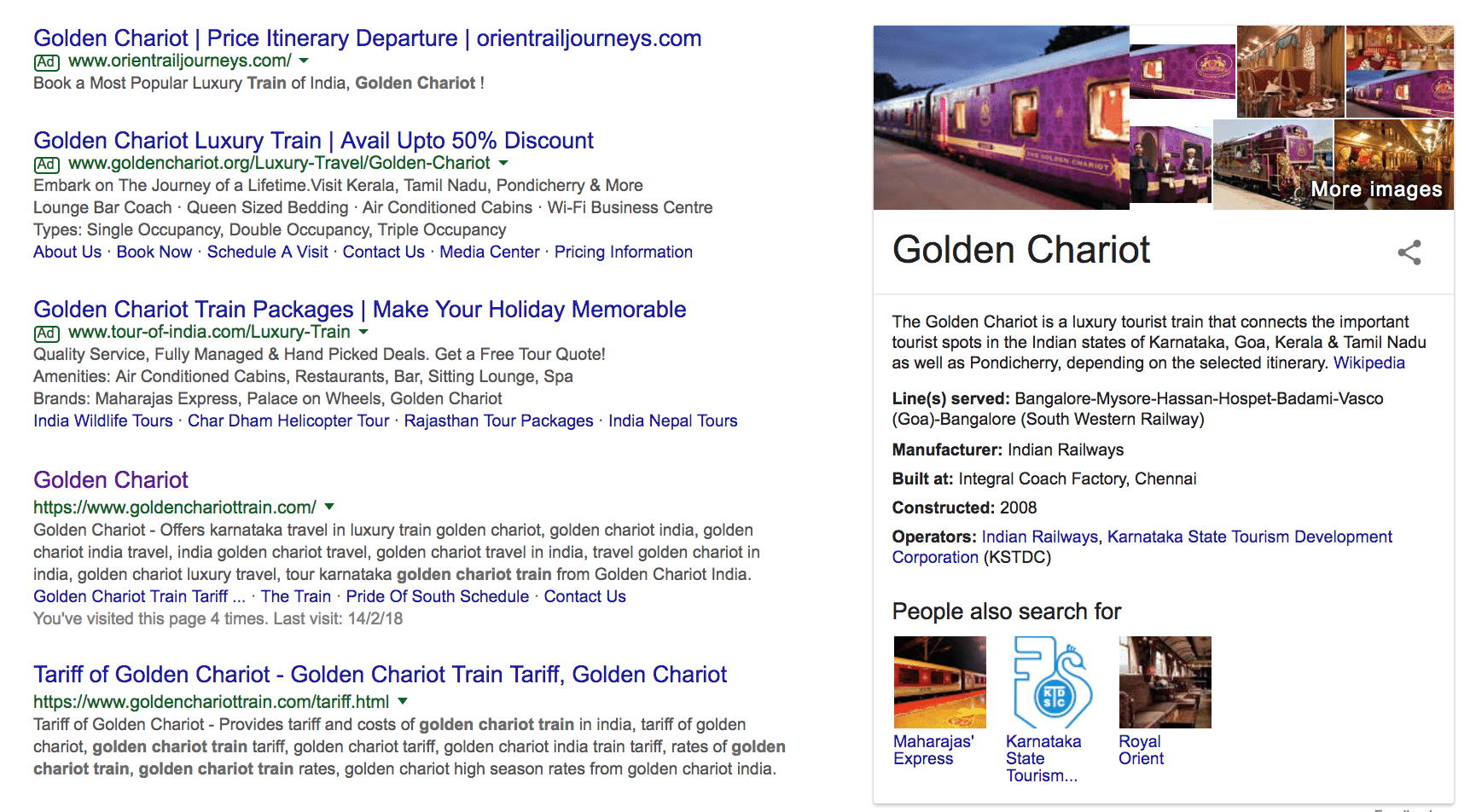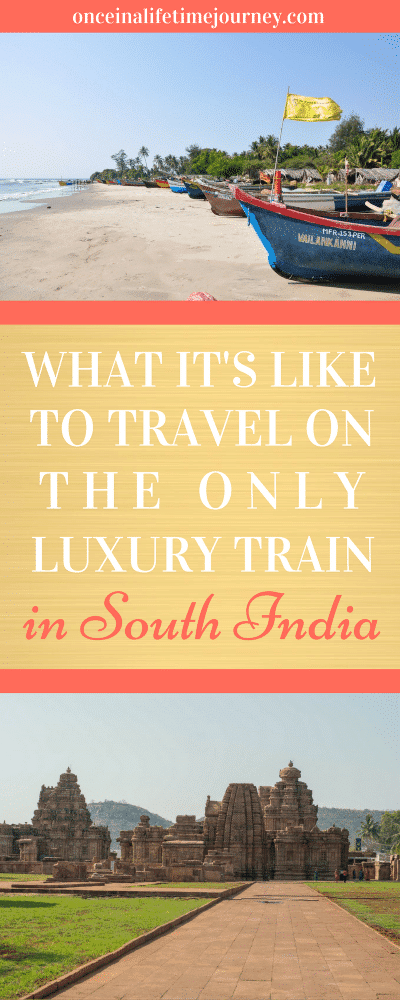Once in a Lifetime Journey was invited to join the Golden Chariot Train as part of the Great India Blog Train Journey. As always, all opinions are our own.
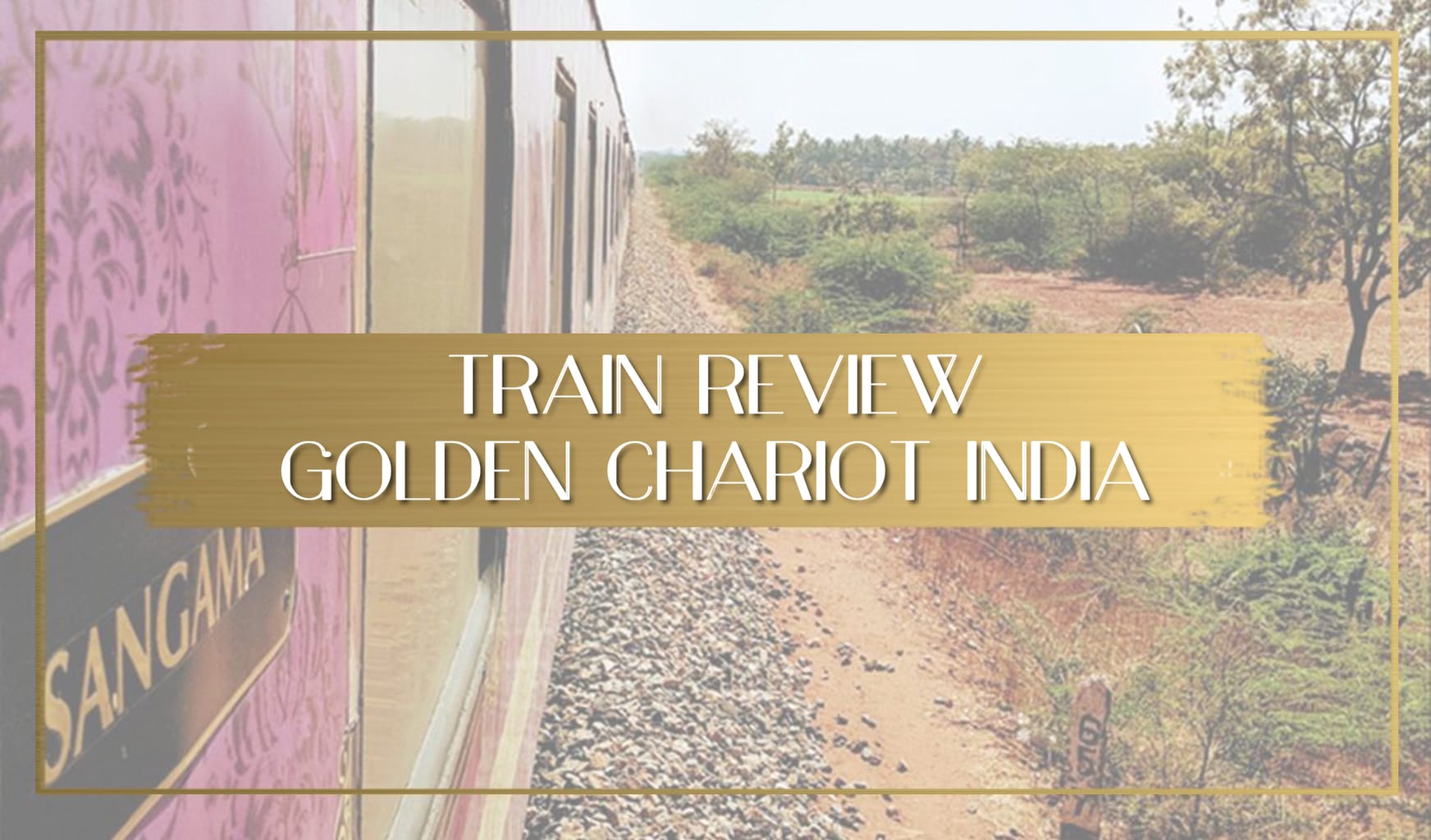
In 2012 I booked my first ever trip to India onboard the Maharajas Express luxury train and it still remains one of the most memorable luxury travel experiences of my life. The decadence and opulence of the Raj could not have found a better match than the regal carriages of the famed train.
But the Maharajas Express is not the only luxury train in India, there are four other trains competing in giving rail lovers an experience of a lifetime. Luckily, in 2018, I was invited to experience another one of them, The Golden Chariot. So continue reading for a detailed account of my journey and a review of The Golden Chariot, the only luxury train in the south of India.
This review includes everything you need to know about the journey onboard The Golden Chariot such as the itinerary, what the train looks like inside, the food onboard, the route on the two itineraries available, as well as plenty of photos to give you a sense of the space.
The Golden Chariot train layout
The Golden Chariot train follows the same layout as the rest of the luxury trains in India and, in fact, across the world. Luxury trains are usually organised across a central piece where the bar, restaurant and kitchen coaches are.
The cabins are then attached at either side of the restaurants so that there is the least amount of walking from the rooms to the common dining areas. In a lot of cases, the boarding and offboarding of the train happens only through the bar carriage door but that was not the case on The Golden Chariot. In our train, there were 19 coaches, making the length of the train around 600-700m long from one end to the other.
The Golden Chariot has two restaurant cars with similar design and serving the same menu, the duality is just to provide enough seating space for everyone to eat at the same time. Tables are set at either side of the isle in sets of four with two seats and intended for sharing.
There are also two kitchens, one cooking Indian food and one cooking Western food. The separation is for practical reasons as both types of foods require different cooking methods and utensils and use different ingredients.
Take a look at this live video that I did on Incredible India Facebook’s page during one of our stops…
The kitchens onboard The Golden Chariot are incredibly fascinating to look at. They are smartly organised and very compact, it is incredible that the 80 meals served at every sitting are all cooked in such a small space with so many cooks not spoiling the broth. What is more, everything is cooked with electricity as there is no gas onboard, and often times, while the train is moving.
At one end of the train is the train captain and at the other end, the staff quarters. Each of the room cars have a cabin attendant helping the four cabins. The attendants have a small kitchenette where they can prepare tea or coffee and provide snacks in your room.
They also sleep in the cars, on a foldable bed that is tidied away during the day. They are there to be your butler and iron your clothes, bring you an early morning cup of tea or unpack and repack your luggage.
The room coaches are all decorated and named after a different dynasty ruling Karnataka through the centuries, Ganga, Sangama, etc. That means that the curtains and carpets are slightly different in each coach.
The Golden Chariot also offers two other facilities onboard: a gym and a spa. They are both quite compact but able to provide the services you would enjoy in a full fledged hotel. In the gym you can find a treadmill, an elliptical machine and a bicycle and the spa has two rooms.
The rooms onboard The Golden Chariot
The Golden Chariot only has two types of ensuite rooms: twin or double. Inside, both types are largely the same except for the bed configuration. The twin beds have two beds against each wall and a third bunk bed that is folded away, whereas the double bedrooms have the bed in the middle of the room.
The rooms on The Golden Chariot have beds along the length of the train instead of the usual luxury train layout outside of India where cabins have sofas that convert into bunk beds for the night and which are perpendicular to the train.
This means you get an actual bed of an appropriate length to sleep in without much compromise over a regular hotel bed. Except for the fact that the train does move on some nights.
While the double beds are more comfortable, the twin bed configuration means that one of the beds is by the window as opposed to in the middle of the room. It also allows for sharing bringing the prices down significantly.
The rooms also have a small closet, a small desk area that can be folded up if not in use, a bedside table in the middle or two at either side of the double beds, and a fully equipped bathroom.
I have traveled on a lot of luxury trains across the world from South Africa’s Rovos Rail to the Golden Eagle Trans-Siberian, and the luxury trains in India have the best bedrooms available with proper full size beds and ensuite bathrooms.
Even the all time luxurious and decadent Venice Simplon Express has shared bathrooms at the end of each car (like on my train to Lhasa) and the very expensive Golden Eagle Trans-Siberian train has small bathrooms where you shower basically over the toilet.
The Golden Chariot and other luxury trains in India like The Maharajas Express, all have full size bathrooms with walk-in sealed showers you can comfortably wash in, no more awkward showering on top of toilets creating puddles on the floors as the train rocks from side to side.
The train also provides bathroom amenities, bathrobes, towels and a full length mirror. To be fair, the cabins are pretty compact but comfortable and you have everything you need. It may get a bit crowded if there is two of you but you are in a train after all, so you should be ready to compromise a bit when comparing to a hotel room.
These are some of the best train rooms you will see unless you can splurge in the Presidential Room at the Golden Eagle or the newly refurbished Venice-Simplon Orient Express suites which are truly sensational.
The food onboard The Golden Chariot luxury train
There is no doubt that The Golden Chariot train offers some of the best food there is from the south of India, from Karnataka in particular, as well as from the rest of the country.
The international dish selection was also fantastic. It is impressive to think that all the food is cooked onboard, often times, on a moving train in two tiny kitchens by a dozen staff members.
Have you ever tried to cook on a moving boat? If you have you will know how hard it ts to get anything done when the surface keeps moving. It is really difficult.
And Indian dishes are the result of slow cooking techniques with lots of ingredients, spices and textures cooked for long periods of time. Indian food is definitively the labour of love!
This is why the teams start preparing for breakfast at 4,30am making everything from scratch, including the bread rolls and all the Indian breads which were always delicious. Dinner is prepared from 1,30pm onwards.
At every seating there were always three options, two Indian set meals of thali with either vegetarian or non-vegetarian options as well as international dishes to choose from.
There was always a soup and a small salad to start off and delicious desserts. The menu changed at every meal and were never repeated. Even the breakfast options changed daily offering from idlis to dosas or puris. Everything was always delicious.
It is impossible to leave the train hungry and, more likely, you will leave with a couple more kilos on because of all the indulgent food you can’t say no to.

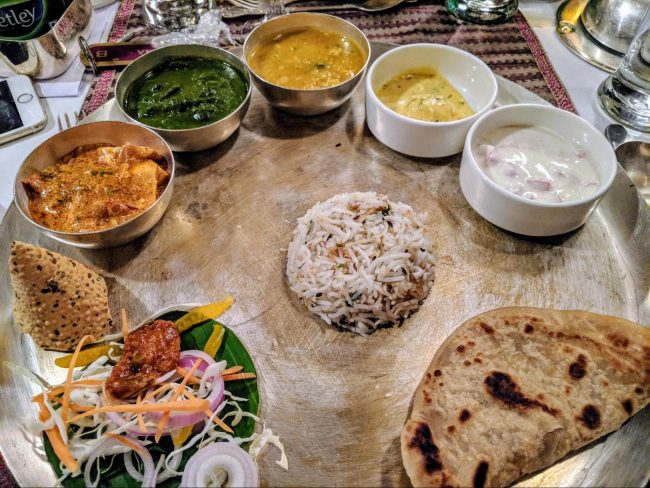
There is a drinks menu as well which includes local wines from India and several international options. A fully stocked bar has a decent selection of liquors and other options to choose from.
In India, whiskey is big so there were also a few labels. Tea and coffee, both Indian versions or international options, were always available. You cannot leave without trying the Masala tea or the Indian coffee. Since I could not choose, I often had both!
The route plan and itinerary on The Golden Chariot
The Golden Chariot focuses on the states of Karnataka, Goa, Kerala and Tamil Nadu, this is why it is considered the only luxury train in India which travels through the south of the country as the other four luxury trains cover the states of Maharashtra (Mumbai), Rajasthan (Jaipur, Jodhpur, Udaipur, Bikaner, Jaisalmer) and Uttar Pradesh (Delhi) with famous stops such as the Taj Mahal.
Bonus reading: If you are planning on visiting Rajasthan, I have written extensively about it. You can read about the best places to stay in Jaipur (like Amanbagh), Udaipur (like Shiv Niwas Palace), or Jodhpur; and see my travel guides to Jaipur, Jodhpur, Udaiper and Jaisalmer.
As these four states are vast (except for maybe Goa which is the smallest in India) and have a lot of sights, The Golden Chariot train offers two itineraries that split the south both starting and ending in Bangalore.
The Pride of the South itinerary covers Karnataka and Goa while the Southern Splendour itinerary explores Kerala and Tamil Nadu. In both cases, the journey lasts seven nights and eight days with several stops along the way. In the table below you can find both itineraries for comparison.
| Day no. | Pride of the South | Southern Splendour |
|---|---|---|
| Day 1 | Bangalore | Bangalore |
| Day 2 | Mysore and Kabini safari | Chennai and Mahabalipuram |
| Day 3 | Kabini safari and Mysore | Auroville and Pondicherry |
| Day 4 | Shravanabelagola Monolith, Belur and Halebidu | Brihadeshwara Temple complex and Tiruchirapalli |
| Day 5 | Hampi | Madurai |
| Day 6 | Pattadakal and Badami Caves | Kanyakumari, Wooden Palace and Kovalam beach |
| Day 7 | Goa | Kerala backwater rice boat and Fort Kochi |
| Day 8 | Bangalore | Bangalore |
The two itineraries are very different mostly because the four states are very unlike each other despite being commonly bundled in together as the south of India. The architecture and construction styles to be expected will also vary significantly in the two itineraries.
The Pride of the South itinerary focuses mostly on discovering Karnataka, a very much unknown Indian state that is rich in heritage and history and which has Bangalore as its capital. In this itinerary you can expect to find out more about the wealthy historical past of Sultans and their fights with British forces.
The modern and incredibly exotic Mysore Palace contrasts with the ancient carvings in the UNESCO-listed Badami caves or the Pattadakal Temples, the source of most of India’s architectural movement. The ancient city of Hampi is an expansive area with impressive constructions and a glorious Medieval past.
The two half day excursions to Kabini Wilderness Park and the overnight stay within the park also gives the chance (if not guaranteed) of some wildlife sightings, which is not part of the Southern Splendour train journey.
In contrast, the South Splendour traces the sea shore with plenty of time for seaside culture and several encounters with water, from the sunrise at India’s most southern point to see the confluence of three seas to the backwaters of Kerala. The changes in architectural influences and customs here are also large.
From the French inspired Pondicherry to the Portuguese and Dutch Fort Kochi (Kochi is in Kerala) this is an itinerary for a more recent outlook into Indian culture with dashes of southern Tamil culture and rich heritage landmarks.
How do you choose between the two itineraries on The Golden Chariot?
If you have never been to India before, I would think The Pride of the South gives you a good look into some of the country’s richest past. However, Southern Splendor might be an easier way to get in contact with what is a very complex country. Both itineraries are fantastic and provide glimpses into lesser known parts of India beyond the popular Golden Triangle of Delhi, Agra and Jaipur.
The service onboard The Golden Chariot
Any luxury trip in India always starts and ends with amazing hospitality. I have experienced this eagerness and true service focus on numerous trips. Sometimes, it is even too much as you are constantly offered things. Another cup of tea? A snack? Perhaps help booking a taxi?
The Golden Chariot was no exception. The entire staff onboard the train were fabulous. They were kind, friendly, helpful and willing to give a hand with anything you require.
The train employs some of the staff members to help you while onboard and then come out on the excursions with you so you are always taken care of by someone who knows you. There were always two staff members in the bus with us ready to give us fresh water or make sure we were not left behind at some of the crowded sites. It is difficult to find a better service level than the one they provided.
Additionally, every four cabins in a coach have a cabin attendant whose only job is to help you with anything you need. I asked mine to help me iron some of my creased clothes and he immediately brought the iron out to get it all crisp and ready to wear.
I also availed of many a masala tea in the morning or afternoon which was always served in silverware and a side of biscuits. As the cabins don’t have their own AC units, the cabin attendant is there to help with increasing or decreasing the temperature. In my case, always to bring it up as I am always cold.
Lastly, the cabin attendants can help unpack or repack a suitcase so you don’t even have to worry about that hassle.
Aside from the staff, there were also a few other service-related details which caught my attention. Announcements were made every morning and evening about the day’s program giving us tips about what to wear and the disembarkation times we had to be ready for.
This information and more was always included in the daily cards that were left in our room which were perfectly updated with the changes in the schedule that we had.
I found these cards to be of immense value as they provided us with the time we would spend on buses, the train, where we would eat, and what we were supposed to wear. They also gave short introductions to the sights of the day and indicated if we were supposed to remove shoes and if photography was allowed.
Special mention always goes to the chef who not only cooked us fabulous meals but was also a great serviceman always ready to cook anything we felt like or give us another dish to try.
Things to see on The Golden Chariot Pride of the South itinerary
I was invited by the Ministry of Tourism of India to join their Golden Chariot Pride of the South journey along with other 14 bloggers and influencers and here are the main sights and stops on the itinerary.
Day 1 onboard The Golden Chariot Pride of the South – Bangalore
I arrived in Bangalore a day before the start of the train journey so I technically had day 0 and day 1 in Bangalore which was a good idea because the city has a lot more to see than most articles and listicles with the best things to see in Bangalore will have you believe. In fact, I put together a list of things to do in Bangalore collecting all the best activities and places of interest.
As part of the train journey, you will meet at the Taj West End Hotel and after a briefing and cultural performance you will be taken to the ISKCON Temple, which is believed to be the largest Krishna Temple in the world. The temple is well worth the visit as I discovered on my last day in Bangalore.
Because we were on a slightly different schedule to the rest of the passengers on the train, we had an extra half day tour of the city which included the Tipu Sultan Palace and the Botanical Gardens (Lalbagh) in the morning before heading to the Taj West End.
Additionally, in my extra day, I also visited the Court House (from outside as you can’t get in) and the Vidhana Soudha building, the main landmark of Bangalore and the seat of the State legislature of Karnataka. And also immersed myself in the color, smells and sounds of the KR Market, an explosion of color which was a highlight of Bangalore for me.
Once at the Taj West End, you will attend a briefing, do the formal check-in, rooms will be assigned, keys given and luggage tagged so it can be taken to the train directly.
The briefing has all the guests together in a hall being addressed by the General Manager of the train as well as other officials from the Karnataka Tourism organisation followed by a cultural performance. I found the cultural performance to be quite impressive and interesting.
If you arrive earlier, you are also invited to join a historian from the hotel to tour the property grounds which are steeped in heritage rich storied. The Taj West End is one of the best luxury hotels in Bangalore, and while I did not stay there this time, the hotel deserves some additional time to hear more about its rich past.
After all the formalities were finalised we were supposed to visit ISKCON Temple but since we had been delayed by other matters we had to skip that visit and went straight to the train so that we could make an entrance through the masses of people who had congregated at the station and were wrapping around our red carpet.
The rest of the passengers did indeed visit the temple. Given how large the complex is and how new to me the Krishnan variant of Hinduism is, I would have welcomed a guide who could have explained what was happening. Read more about my visit to ISKCON Temple on the last day to find out more about this unusual and most fascinating temple.
Useful things to know on day 1 onboard The Golden Chariot
Although today is mostly an arrival day, it is useful to make sure you arrive with plenty of time to explore the Taj Hotel. What is more, if you can, you should arrive a day earlier and spend a night at the hotel as you explore Bangalore. If you are coming from far away, this will also help you fight jet lag better because it might be tough to sleep on the noisy moving train if you are a light sleeper.
Day 2 onboard The Golden Chariot Pride of the South – Mysore and Biligiri Ranganna Hills
Our first night on the train saw little movement until mostly in the morning before breakfast, when we traveled from Bangalore to Mysore.
In the morning, we got off the train ready to explore the royal Mysore Palace, an utterly mesmerising palace that was as intricate as it was colourful. The train journey includes knowledgeable local guides at every stop who will tell you everything about each place.
The Mysore Palace, also known as the Ambavilas Palace, is one of seven palaces in the royal city of Mysore. The building used to the be the residence of the Wadiyar Dynasty and the seat of the Kingdom of Mysore.
Although the original palace was built in the 14th century in the same location, the building standing there today was finished in 1912 and was commissioned to a British architect with the intention of designing an exotic palace and I am pretty sure the brief was fulfilled.
The construction is stunning to see from the outside, especially at night when it is lit with thousands of lights, but it will leave you speechless once you walk inside and marvel at the incredible halls, all of which have painfully detailed floors, walls, columns and ceilings.
You could easily spend hours inside but are likely going to want to come out because of the sheer number of visitors amounting to 6 million every year who visit the palace. That is more than 15,000 people a day.
After the visit we drove straight to the park for an afternoon safari.
The usual Pride of the South itinerary on the Golden Chariot includes a night at Bandipur Tiger Reserve. However, because our trips were booked late and the park is very popular, there were no more rooms for all of us so we were offered the possibility of staying at Kyathadevara Gudi Wilderness Camp in the Biligiri Ranganna Hills (BR Hills).
The park is about 2,5 hours drive from Mysore and is a wilderness area where tigers, leopards and elephants roam freely. However, like in most parks in India, the likelihood of seeing tigers or leopards is low because the area is usually large and the animals in lower numbers than you would find in African safari parks.
Also, the vegetation is lush and there is plenty of water so animals can easily hide. Wildlife is best seen in the summer months but the train only runs in the winter.
We arrived at K Gudi for lunch and after a quick bite jumped on our jeeps for the afternoon safari drive. Unfortunately, we only saw deers but no feline or elephants. Back from the drive, we tried to clean from the dust that unavoidably covers it all in the Indian safari parks, and got ready for dinner under the stars.
The staff lit a campfire, very much appreciated in the cooler hilly area, and we enjoyed snacks and drinks under clear skies.
K Gudi offers a combination of a tented camp and log cabins both of which are relatively basic and have running hot water available for showers after game drives. Buckets are available for washing outside of these timings when hot water is not available.
Useful things to know about Mysore and the safari
A lot of time is spent in the bus or the jeeps and the day is pretty active too. Dressing appropriately for the safari will be very useful given the cold and dusty weather. I have a detailed safari packing guide to help you out.
| Mysore Palace | Kabini / Bandipur / BR Hills |
|---|---|
• Shoes will have to be taken off at Mysore Palace but temple socks will be provided • Photos and video are not allowed inside the palace • The palace is very very full at all times so it can be a bit stressful | • The drive to the park is 2.5h from the train so it can get quite tiring, especially as the roads in the park are narrow and winding at times • You have to bring an overnight bag • It can get really cold in the evenings and mornings so bring a jacket and a scarf • The game drives are very dusty so it pays to bring a mask to protect your nose and mouth • A hat is a must as the jeeps are open • Shower facilities can be basic • Wear clothes in colors of nature, earthy greens and browns and avoid bright colors of white which do not exist in nature |
Day 3 onboard The Golden Chariot Pride of the South – Biligiri Ranganna Hills and Mysore
In the cold morning, at 6am, we jumped back on the jeeps for a second chance at spotting animals but were equally unlucky. The elusive cats did not show up.
Seeing wildlife in India is certainly a very hit or miss situation. I saw tigers in Ranthambore onboard The Maharajas Express but that followed 3 hours of driving in an open-top jeep at freezing temperatures and there was little else to be seen otherwise.
I always recommend visitors to focus on the many other sights in India beyond the wildlife and to leave that for an African safari but since it was part of the program and it only involved a couple of drives, it was a nice way to break the cultural theme. Also, the guests who went to Bandipur did in fact see leopards and elephants.
After breakfast, we drove back the 2,5h to the train for lunch and continued to Mysore in the afternoon to visit the rest of the sights in Srirangapatna, a town near Mysore where a lot of the most important sights in the area are located: Srirangapatna and the Ranganathaswamy temple, Daria Daulat and Gumbaz.
Tipu Sultan Summer Palace also known as Daria Daulat, was a really stunning building. Made entirely of wood with carvings, paintings and beautiful colours it was one of the highlights of the trip.
Tipu Sultan’s Mausoleum, Gumbaz, was located in a mini-Taj Mahal structure and we also got to visit that. The tomb was surrounded by gold and tiger stripes as was famous and favourite of the Sultan who was known as the Tiger of Mysore.
The remaining sites in The City of Palaces, as Mysore is known, were visited from the bus but you could tell there was a lot more to see in Mysore. We saw Tipu Sultan’s rocket launch site, the ruins of the old fort and several other constructions now half destroyed.
The itinerary also included a shopping stop before a cultural performance and dinner at the Lalitha Mahal Palace hotel but we were all quite exhausted from the 5,30am start so skipped the shopping. Before we were served a buffet style dinner at the palace, we participated in a cultural performance by a single dancing lady.
I always find these Indian traditional dances very intimidating and intense but also very fascinating, especially since people still practice them today. The movements of the hands and face and the expressions are truly mesmerising.
The safari is a nice addition to the itinerary on The Golden Chariot but for me, having been on so many African safaris, it is a part I would easily exchange for more time in Mysore which is such a heritage rich and beautiful city.
Here is my complete tour guide of the Tipu Sultan Summer Palace in Srirangapatna, Mysore.
Useful things to know on day 3 of The Golden Chariot
A lot of time is spent on the bus today as the drive back from the park to the train is long and in the afternoon, the ruins of the Mysore Fort as explored on the bus. It is also a very long day from the 5,30am wake-up call to the 10pm return to the bus.
| Kabini / Bandipur / BR Hills | Mysore |
|---|---|
• Early morning game drives can be really cold so bring a thick jacket • Tea and biscuits will be provided before the safari and full breakfast after you return • As the shower facilities may not be the most convenient, you may want to shower back in the train | • Daria Daulat Bagh does not allow photos inside and the outside is covered from the sun to protect it. Shoes can be worn in the palace • Gumbaz, the mausoleum of Tipu Sultan, also does not allow photography inside and you need to take your shoes off to get in |
Day 4 onboard The Golden Chariot Pride of the South – Shravanabelagola, Belur and Halebidu
The day usually starts with a climb up the 700 steps to Shravanabelagola village where the 10th century statue of Jain Monk Gommateshvara Bahubali is located. The statue is 58 feet high.
However, because we happened to be there at the time of the once-every-twelve-year “mega-event” festival dedicated to the gods which was attended by the Indian Prime Minister, the train management decided to swap the itinerary with a tour of the coffee and spice plantations at The Serai luxury resort followed by Belur and Halebidu.
This made for a different and fabulous day combining time outside and some culture although we missed the famous statue and the event which gathers millions of people coming to anoint and venerate Jainism’s most important tirth (sacred place) with honey, milk and flowers.
The three sights of day 4 have been on the proposed list of UNESCO sites and may be added in the future.
Dinner was onboard the train which started to move towards Hosped at around dinner time and was on the move for the rest of the night.
Useful things to know about The Serai, Belur and Halebidu
If you are indeed going to visit Shravanabelagola then you should make sure to bring a hat, sunscreen and proper shoes as there are 700 steps to reach the top. If you are going to The Serai, pool wear will come in handy.
| The Serai | Belur | Halebidu |
|---|---|---|
• The Serai is part of the Coffee Day Enterprises and so it is a great place to purchase some very affordable coffee beans ($2-$4 for ground coffee) • Bring your swimsuit if you want to spend some time relaxing by the pool at the resort | • You will have to take your shoes off in Belur but temple socks will be provided • Pictures are allowed everywhere • This is a working temple so devotees are commonly seen paying their respects | • You will have to take your shoes off in Belur but temple socks will be provided • Pictures are allowed everywhere |
Day 5 onboard The Golden Chariot Pride of the South – Hampi
Before embarking on the journey, Hampi was what I was most looking forward to visiting as part of the trip and the main reason I preferred to go on The Golden Chariot as opposed to The Maharajas Express.
However, after the trip ended, I am not sure if Hampi would be the highlight as some of the other sights I was unaware of before the trip were equally impressive. It is not that Hampi disappointed at all, but that there were so many other places that impressed me.
On our day 5 onboard The Golden Chariot we spent the day at Hampi. Hampi is a UNESCO listed site which comprises of several monuments, temples, constructions and other landmarks spread over a very large boulder area which gives the ruins a very majestic look.
We visited the Virupaksha Temple, the local Hampi Bazaar, the Queen’s bath, the elephant stables, the royal enclosure and the Hazara Rama Temple. In the afternoon, we went back to the Vittala Temple to see the Stone Chariot which gives train it’s name, and ended the day at the shores of the Tungabhadra river.
Hampi used to be the capital of the Hindu Vijayanagara Empire and was established in the 14th century, blossomed in the 15th and was finally destroyed in the 16th century by the Sultans who defeated the Hindu dynasties at the time.
At its peak, the city was considered the second-largest medieval-era city after Beijing and you can see today how that must have been true when you understand the expansion of what is left. Some of what is still standing is beautiful and talks of a wealthy and proud civilisation.
You can easily spend days exploring Hampi yet we only had a day so we got a good introduction to the city by visiting its most important sights and saw the sunset by the river.
We had a lunch break at Evolve Back by Orange County, a beautiful resort near Hampi where we had a fantastic buffet lunch and relaxed for a bit in the lovely villa-only resort. In the evening, we enjoyed a cooking demonstration by the chef onboard who taught us how to make a delicious chicken curry from the south.
Useful things to know about Hampi
Hampi is usually much hotter than the rest of the places you will visit on the journey so it pays to be well prepared. Sunscreen and an umbrella to protect yourself from the sun, or at least a hat, are essential to avoid being sunburnt and surviving the very high temperatures. As the boulders have polished surfaces, trainers are useful.
You will be walking on a lot of sand so closed shoes will help keep your feet clean. Shoes need to be taken off in a few places. Beware of very smart monkeys at some of the temples who have probably been cleverly trained to steal valuables. I saw a monkey take away a battery pack from a tourist.
The temple staff then went on a crusade to chase the monkey with sticks and beat it to death if necessary so it would return the item.
Day 6 onboard The Golden Chariot – Pattadakal and Badami caves
After Hampi, two sites we visited on the sixth day of the trip really caught my attention. These are the second UNESCO site in Karnataka, the complexes of Pattadakal, Aihole as well as the caves of Badami.
I found Pattadakal very beautiful. I had never heard of it before but the warm hues of the stone the temples were carved in against the green lush vegetation. This, together with the palm trees give the complex a stunning frame.
Pattadakal, meaning Place of Coronation, dates back to the 7th and 8th century and is a combination of Hindu and Jain temples. What makes Pattadakal as well as Aihole and Badami unique, is that they became the center of experimentation and exploration of artistic and architectural movements during the 5th to the 7th centuries and were at the nexus between north and south India.
After Pattadakal we headed to nearby Badami caves which were another impressive achievement. There are four caves mostly of Hindu origin and the top one devoted to a Jain God that were carved into the rock in the 6th century.
The caves are at various heights and can be accessed by sets of stairs. They all have internal halls with images of the Gods carved on walls and sanctums. To imagine that these would have been cut by people off the hard rock with very basic tools is amazing in itself.
More so to know that the caves were carved from the roof down. By the caves there is a lake and a town whose roofs can be seen from the caves. Look out for the 18-arm Shiva on the first cave, by taking one of the arms at each side and combining it with all the movements on the arms on the other side you can get the 81 traditional dance moves.
This was the only day we had free time to enjoy on the train. After lunch, the train started to move towards Goa. The staff had organised a party onboard with a DJ playing music from 7pm onwards. We partied until almost 10pm when we headed for food at the restaurant car.
Useful things to know about Pattadakal and Badami
As this is a half day tour only, you get some time to relax onboard the train. Note that, while the train moves, internet is practically nonexistent, so bring a book to read and relax. This is also a good day to ask for a tour of the engine room, enjoy a spa or visit the kitchen.
| Pattadakal | Badami Caves |
|---|---|
• Pattadakal can be explored mostly with your shoes on and they only need to be removed when entering some of the buildings. • There are toilets on the premises but bring your own tissue paper • There is little shade in the area so bring hats and sunscreen • TWhen you are inside some of the temples, use Spotify to play some Carnatik music, it goes with the atmosphere as I discovered when our photographer played it | • The Badami caves are usually very busy • There is no need to remove your shoes to get inside as the caves are no longer working temples • Beware of the monkeys, I saw them stealing items from tourists • The caves are in the shade, a much welcome change from the heat of Karnataka |
Day 7 onboard The Golden Chariot – Goa
On the last day of the trip we made it to the beach and it was a sweet and easy way to end the very busy week. Goa is a good place to relax in the beach, possibly the best one in India.
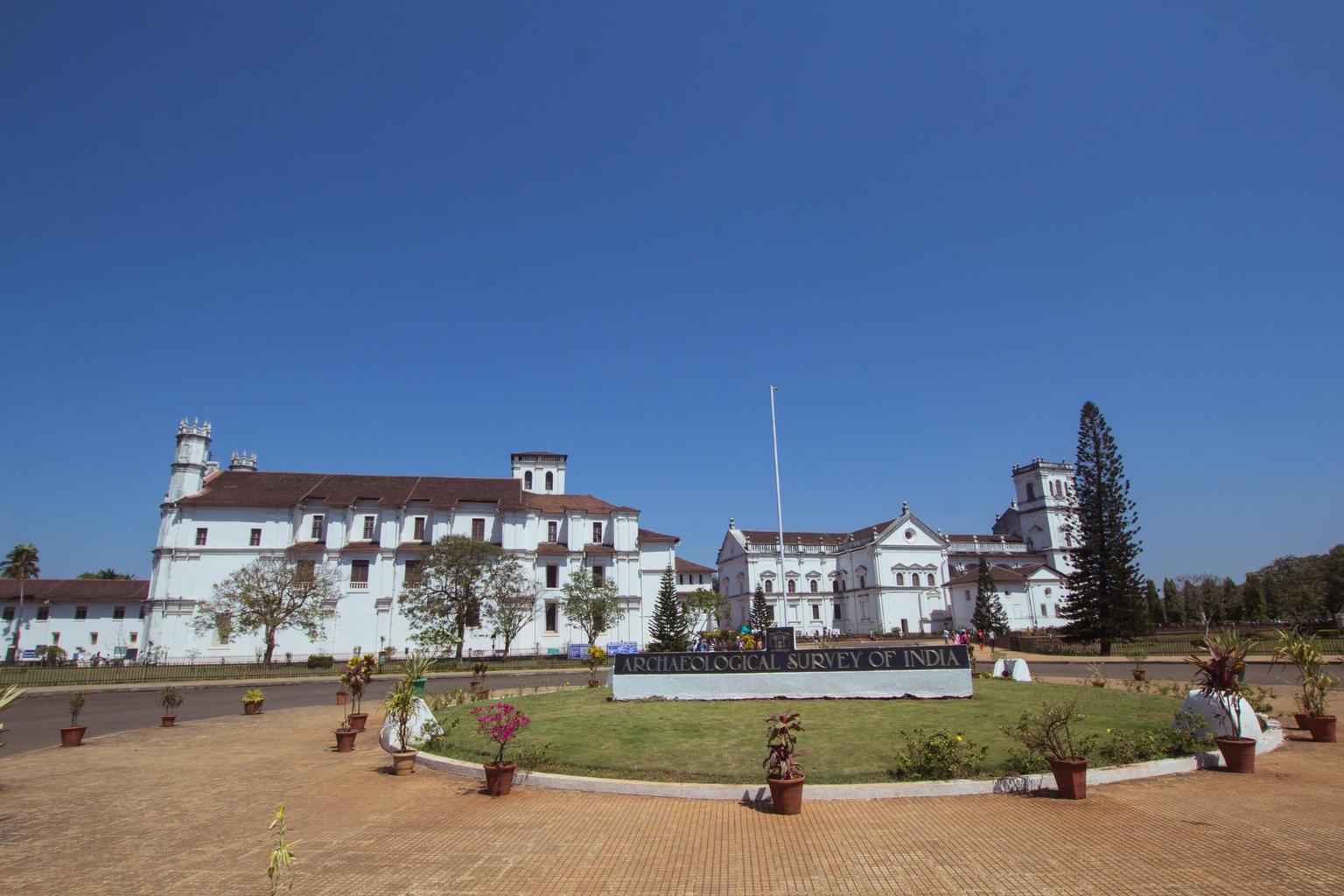
In Goa we visited the two UNESCO sites in the small state, the Old Churches of Goa and the Basilica of Bom Jesus which is said to have the remains of Saint Francis Xavier and then headed to a beach resort to enjoy some sun, pool and beach.
Goa has a rich colonial past as a Portuguese colony for 450 years and was never under the control of the British Empire going from Portuguese territory to annexation into India. I felt like a lot of parts, in particular the churches, were reminiscent of Macau, another Portuguese colony in Asia.
Goa is India’s smallest state and also its wealthiest with more than twice the country’s average GDP per capita and 12% of the tourism arrivals in the country. It also feels like there are more expats here than anywhere else in India and the laid-back hippie culture is definitively alive and well.
We had lunch at the Zuri Beach Resort which has expansive grounds, a large swimming pool and was right on the beach.We enjoyed a lovely buffet lunch and then had a few hours to relax on the beach while sunbathing or walking on the beach.
The beaches of Goa are wide and long and stretch as far as the eye can see so they make for a good family holiday. If you are visiting with the children, here are the best beaches in Goa with kids.
Dinner was served onboard on our way back to Bangalore on what was a 15h train ride all the way back to our starting point.
Useful things to know about Goa
It is wise to bring your swimming gear and enjoy some time on the beach. Goa has tropical and hot temperatures all year round so sunscreen and hats are a must.
You can sunbathe by the pool, on the grass or the beach at the resort or simply head out and walk on the beach. In the churches, you have to adhere to a modest dress code with shoulders and knees covered. You can take photos of everything but while the service is ongoing in the church, you cannot visit.
How to book a cabin on The Golden Chariot luxury train
When I first booked the Maharajas Express journey, I found it very confusing that there are so many websites with similar names related to luxury trains in India, Maharajas Express, etc. A lot of them impersonate the real site and pretend to be the official website when in fact are only resellers and it is hard to tell on the long list of Google results, especially since the non-official sites often rank higher on the results than the official.
The Golden Chariot has the same issue and a few sites will appear on the results page which are not the site of the train company itself.
Unless you are booking the trip through a travel agent or as part of a larger trip that someone else organises, it is always best to book directly with the train company itself. This is the official website of the Golden Chariot train: www.goldenchariot.org so make sure to book with them.
In order to book, you should head out to the booking form. In there, you can see the scheduled departures for each itinerary. Disclaimer: as of July 2018, the Golden Chariot has been revamping its look. The booking form is currently offline. Keep looking at their website to see when they are up and running again.
As The Golden Chariot only has two types of cabins it is easy to choose. You can travel by yourself and pay the individual supplement or share a twin or double bed with someone else. Indian passengers can also book the triple rooms where the third bed is a folded bunk bed. I would think three people would feel really crammed in the twin rooms.
The Golden Chariot schedule, dates and prices
There is only one departure for each itinerary on The Golden Chariot every month and the trains only run during the high season of October to March when the temperatures are not as high and the Monsoons have appeased. The itinerary always starts on a Monday.
The train also allows Indian passengers to join parts of the journey and pay proportionately. This could be an overnight journey from Goa to Bangalore, or two or three night trips to Mysore only or to Hampi. Foreigners have to book the entire journey.
These are the scheduled departures for seven night Golden Chariot for 2018, 2019 and 2020.
| Year | Month | Pride of the South | Southern Splendour |
|---|---|---|---|
| 2018 | October | 8th October | 22nd October |
| November | 19th November | 5th November | |
| November | 26th November | ||
| December | 10th December | 31st December | |
| December | 24th December | ||
| 2019 | January | 7th January | 21st January |
| February | 11th February | 5th February | |
| February | 25th February | ||
| March | 19th March | ||
| October | 14th October | 28th October | |
| November | 18th November | 11th November | |
| November | 25th November | ||
| December | 9th December | 16th December | |
| December | 23rd December | 30th December | |
| 2020 | January | 20th January | 13th January |
| February | |||
| February | 3rd February | ||
| March | 17th February | 16th March |
Prices start at USD4,000 per person sharing and can go up to USD7,000 for single occupancy. Some discounts are available if you book directly with the train operator rather than via agents.
You may be wondering if the trip is worth the splurge and if the price is too high. I find that for what you are getting it is a very reasonably priced trip. Mind you, the rates include everything except alcohol and some drinks when meals are taken outside of the train (water is always included) so I think that $500 per day per person is a pretty acceptable price for a luxury trip with so many offtrain visits, a private butler and all the fabulous meals we had.
When I compare it with what I would be paying if I was to be touring Karnataka on a similar luxury level, I find that it is probably comparable, yet we got to stay on a luxury train and, for a train lover like me, this is reason enough to join.
What to pack for The Golden Chariot Pride of the South
It is important to pack the right items for your train journey so that you are adequately dressed for the occasion and also for each of the sites.
There are many different types of visits on the journey but the space onboard the train is limited, so packing light while bringing all the essentials is key. You want to be covered enough to stay culturally appropriate without being too hot for the weather. While it is ok to show your belly (as most women may do when wearing saris) it is not appropriate to have bare shoulders or wear short skirts.
As a general rule of thumb when traveling in India, long dresses or shirts paired with trousers or leggings and long skirts always work best for the weather and the culture. It is always useful to bring a scarf that you can use to cover bare shoulders at temples or to protect from the sun. I also like to wear silk, cotton or linen trousers with loose shirts. Long dresses are also a winner.
Here are some of the outfits I wore to give you some ideas.
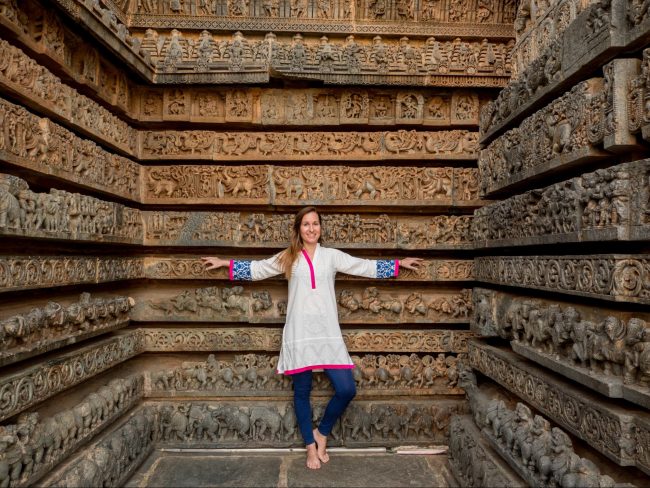
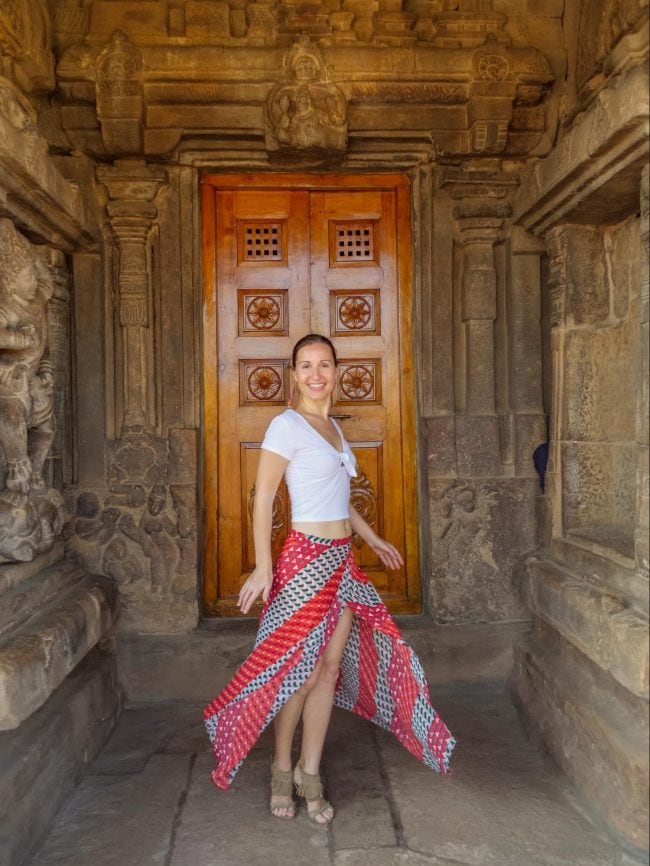
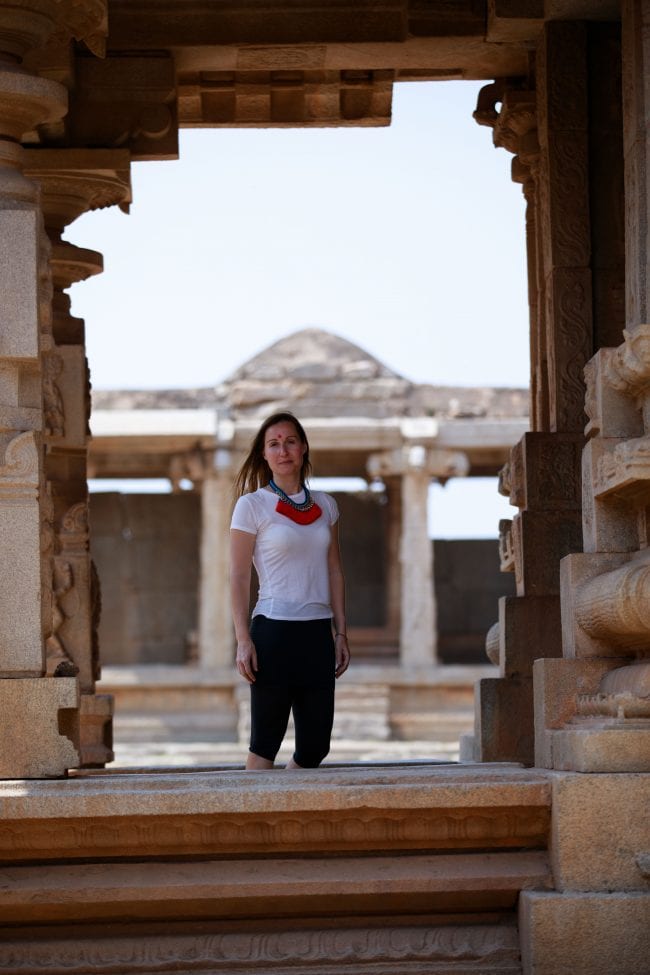
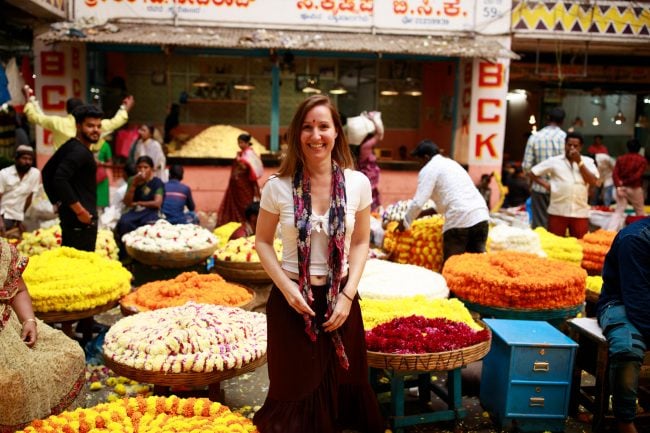
If you want to do some shopping before the trip, there is a contemporary Indian brand I love for kurtas (long shirts) which are light, beautiful and not too expensive. They are called W and I got a few pieces of their clothes when my colleagues took me shopping in Delhi.
There are a few of their outlets in Bangalore, so you can stock up before the journey starts. Everyone who sees me wear their clothes always wants to know where I bought them, they are always a hit and their clothes are so affordable and beautiful. They are the perfect match for the journey.
Here are a few other items you should pack for your Golden Chariot adventure.
- Sunscreen. As always, I am a loyal customer of Biore as they are non-sticky, non-greasy and I can put makeup on top without anyone knowing I am wearing sunscreen, a real saver when you are sightseeing and do not want to look shiny and oily.
- Sunglasses. The sun in India is very strong and it often reflects on the rocks so wearing a pair of good sunglasses is a must.
- Hats. I say plural because you need one for the safari and a stylish one for the sightseeing.
- Slip on shoes. It is important to wear comfortable shoes when walking around in the heat for so long but it is equally important to be able to take your shoes off quickly as you will need to do so many times a day.
- A book, for all the times you will spend in the bus and the train. Here’s a list of some traveler favourites.
- A thick sweater or jacket. It will come in handy in many occasions, from the sometimes freezing restaurant car to the safari evening and morning, a light jacket is something you will appreciate having brought. Also, Bangalore is never as hot as other parts of Karnataka so if you are visiting in the winter months, a jacket can be of use at nights.
- Scarf. I love the tube scarves that I can also use when going into temples unexpectedly as they can quickly double as makeshift skirts.
- Water bottle. You will be given water at all times and the staff always has them ready when you need to hydrate which is very important when in such dry and hot climates but bringing your own refillable water bottle is a great way to save plastic.
Other things you should know about The Golden Chariot
The train has internet onboard but it is unreliable, slow and only available in the bar car. Even if you are not as technologically connected as I am you probably want to continue to be reachable and you probably want the privacy of your cabin to talk to loved ones so it is best to purchase a SIM card.
You will not be able to do so at the airport in Bangalore as they do not sell them, but you can walk into an Airtel or Vodafone store and get one. Make sure to bring a passport photo and your passport as they will need that. The process is rather cumbersome but you can get 1GB a day of day for 30 days for a bit over $10.
I mentioned it earlier but Bangalore is worth an additional day or two so it would be a good idea to add in an extra day to your itinerary to explore the city. My guide to Bangalore is a great place to start.
Fan of train travel? See my posts on:
- The Glacier Express in Switzerland
- Travel on the the Qinghai-Tibet Railway to Lhasa
Pin this to your colorful #India travel board
- Check if you need a visa, get help processing it at iVisa.
- Never ever leave without travel insurance. Get affordable coverage from World Nomads or long term insurance from Safety Wing.
- I find all of my flights on KAYAK. Check their Deals section too.
- Search for all your transportation between destinations on the trusted travel booking platform Bookaway.
- I book all my day trips and tours via GetYourGuide, they are the best and their tours are refundable up to 24h in advance.
- Get USD35 off your first booking with Airbnb.
- Compare hotels EVERYWHERE at HotelsCombined and book with Booking.com.
- Compare car rental prices at Rentalcars.com

